Horizontal deck railings have revolutionized modern outdoor design by offering sleek alternatives to traditional vertical balusters. These contemporary railing systems emphasize clean lines while maintaining essential safety standards, making them perfect for homeowners seeking sophisticated outdoor aesthetics. From minimalist cable designs to warm wood slats, horizontal railings create visual flow that enhances both small balconies and expansive decks. The horizontal orientation naturally draws the eye along the railing's length, creating an illusion of expanded space while preserving panoramic views. Whether crafted from durable metals, natural woods, or innovative composites, these railings combine form and function seamlessly.
1. Horizontal Cable Deck Railing with Stainless Steel Wires
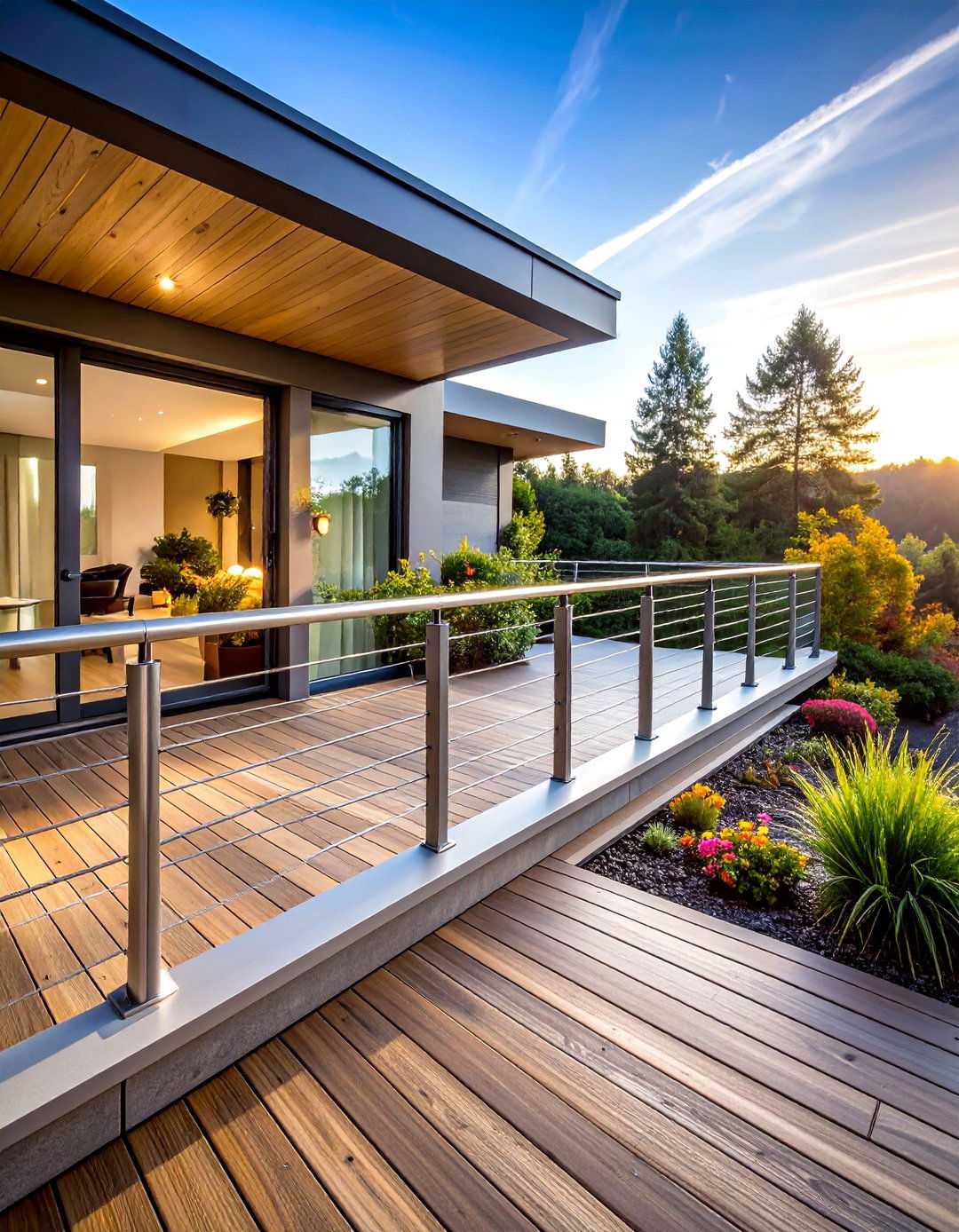
Crafted from marine-grade stainless steel cables, horizontal cable deck railings offer the ultimate minimalist aesthetic for contemporary outdoor spaces. The thin cables virtually disappear from view, creating an unobstructed connection between your deck and surrounding landscape. These systems typically feature cables spaced precisely according to building codes, ensuring safety while maintaining their nearly invisible profile. The tensioning system keeps cables taut and uniform, providing structural integrity without visual bulk. Installation involves securing specialized fittings to posts, making this an accessible option for both DIY enthusiasts and professional contractors. Maintenance requirements remain minimal, with occasional cleaning and tension adjustments ensuring long-lasting performance in all weather conditions.
2. Horizontal Wood Slat Deck Railing with Natural Cedar
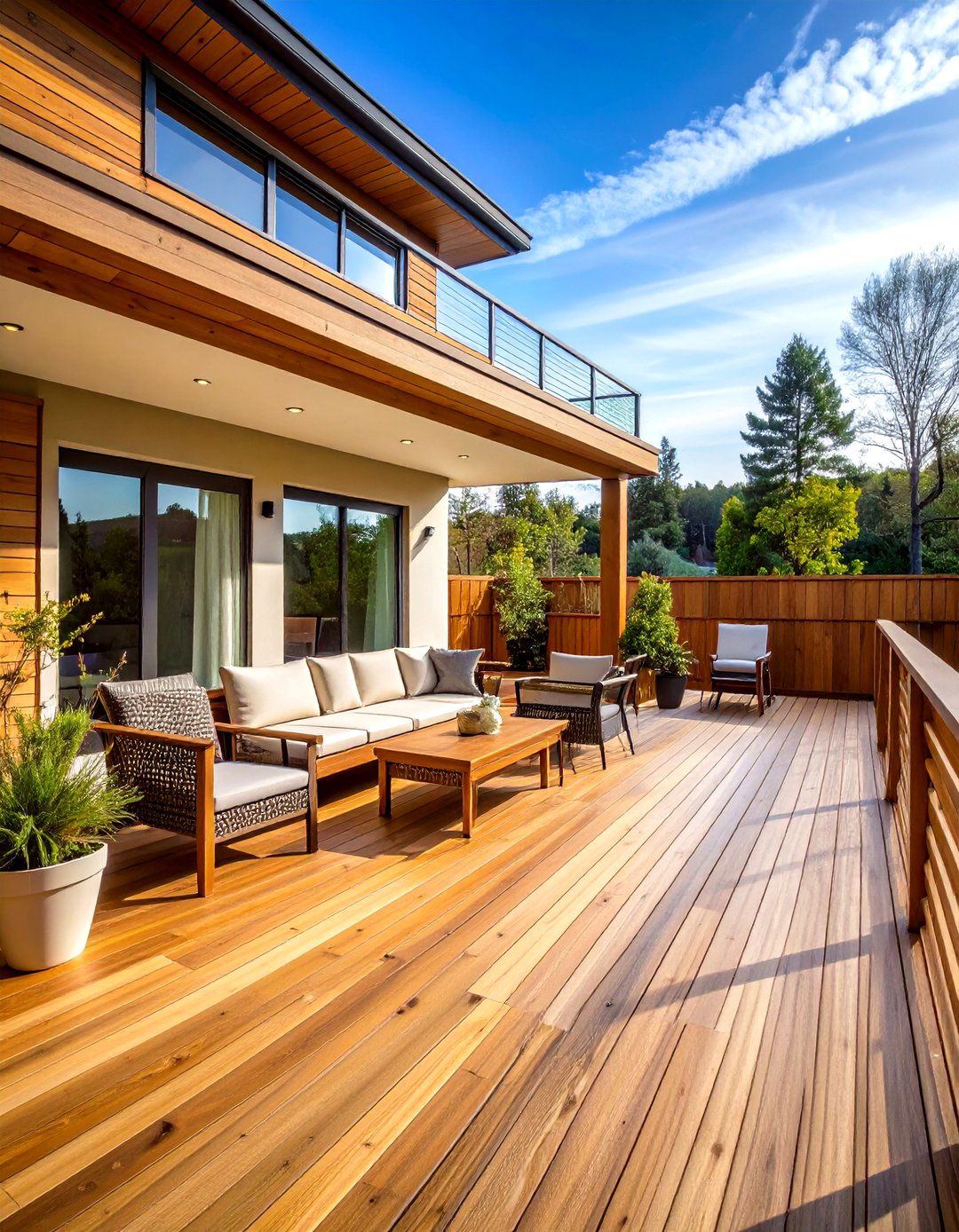
Cedar's natural resistance to moisture and insects makes horizontal wood slat deck railings an ideal choice for outdoor applications. The warm honey tones of cedar create an inviting atmosphere while horizontal slats emphasize the deck's linear dimensions. These railings can be left natural to weather gracefully into silver-gray patina, or sealed to preserve their original color. Spacing between slats allows airflow while providing privacy screening from neighboring properties. The construction involves mounting horizontal boards between sturdy posts, creating clean lines that complement both modern and traditional architectural styles. Regular maintenance includes annual cleaning and periodic staining to protect against weathering and extend the railing's lifespan significantly.
3. Horizontal Aluminum Bar Deck Railing in Powder-Coated Black
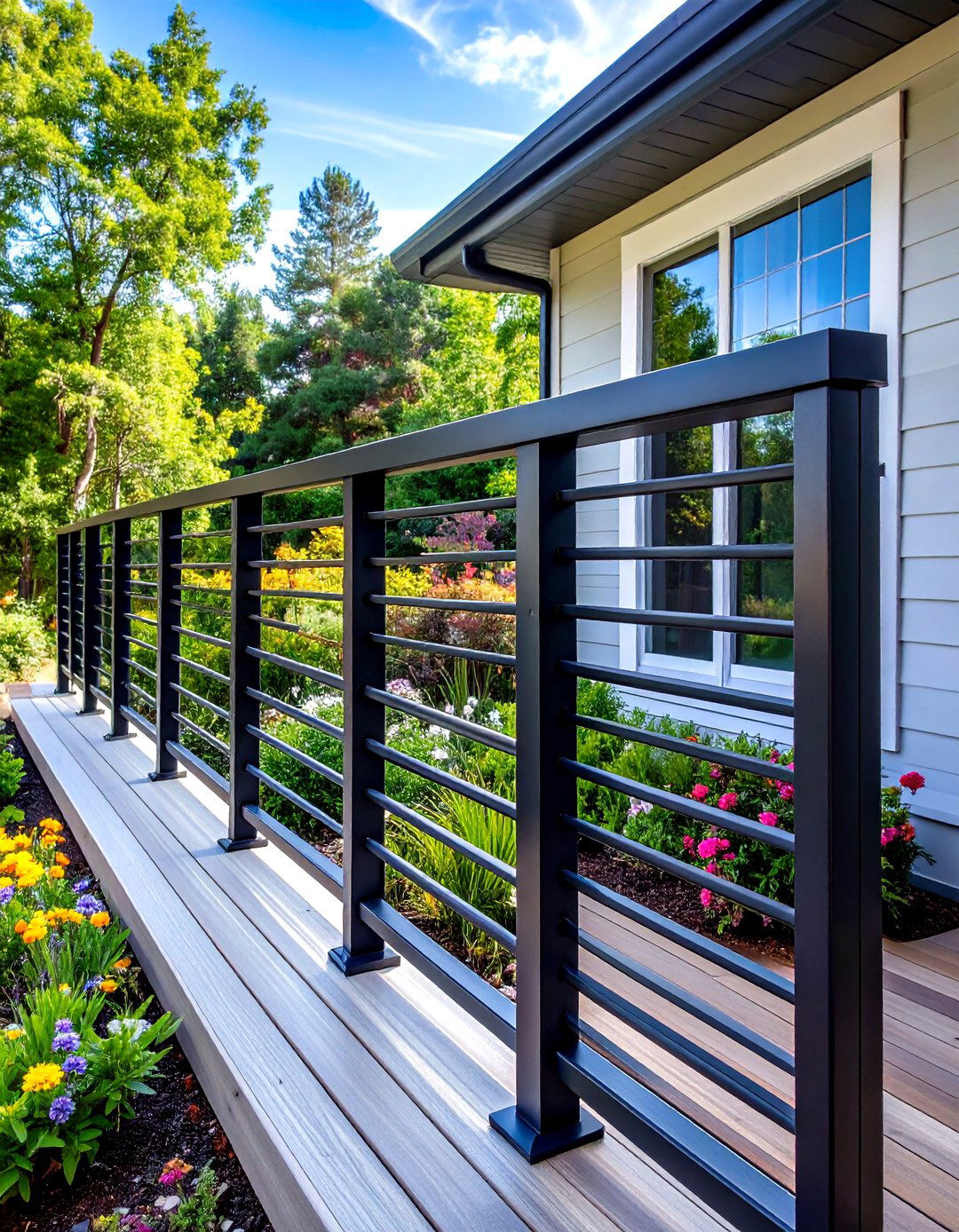
Aluminum's lightweight yet durable properties make horizontal aluminum bar deck railings perfect for contemporary homes requiring low-maintenance solutions. The powder-coated black finish provides striking contrast against light-colored decking while resisting fading, chipping, and corrosion. These systems feature slim horizontal bars evenly spaced between aluminum posts, creating geometric precision that enhances modern architectural elements. The material's thermal properties prevent excessive heat buildup, ensuring comfortable contact even during summer months. Installation typically involves pre-fabricated sections that fit together seamlessly, reducing construction time and ensuring professional results. The corrosion-resistant properties make these railings particularly suitable for coastal environments where salt air would damage other materials over time.
4. Horizontal Glass Panel Deck Railing with Tempered Safety Glass

Tempered glass panels create horizontal deck railings that offer maximum visibility while maintaining essential safety standards for elevated outdoor spaces. These transparent barriers preserve panoramic views while protecting against wind and providing structural security. The glass panels typically measure between 36 and 42 inches in height, meeting residential building codes while creating an almost invisible safety barrier. Specialized mounting hardware secures panels to posts without compromising their clean aesthetic lines. The tempered glass construction provides four times the strength of regular glass, with safety features that cause it to break into small, rounded pieces if damaged. Regular cleaning with standard glass cleaners maintains crystal-clear transparency for uninterrupted views.
5. Horizontal Composite Deck Railing with Eco-Friendly Materials
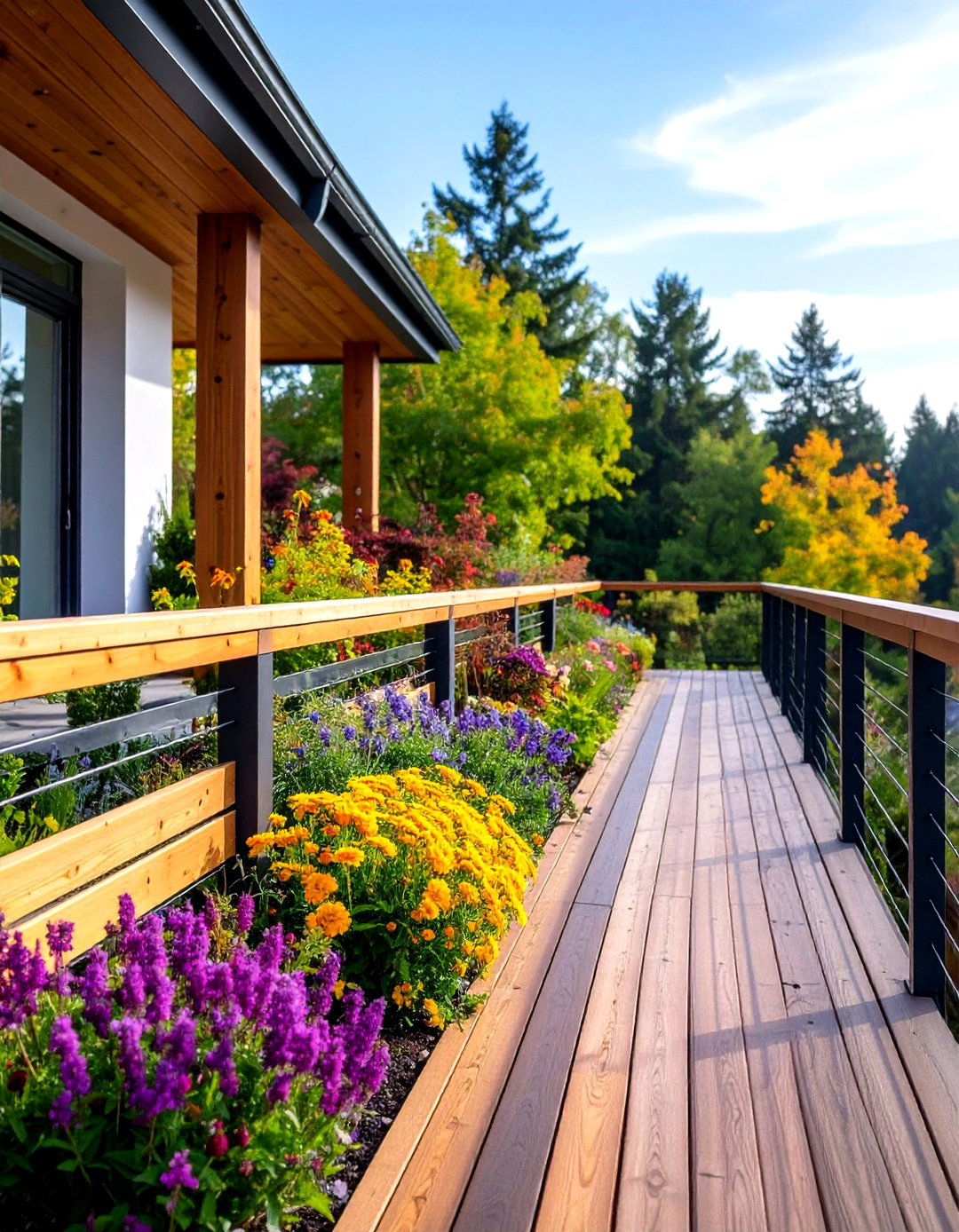
Composite materials combine recycled wood fibers with plastic polymers to create horizontal deck railings that offer wood's aesthetic appeal without maintenance requirements. These eco-friendly systems resist fading, staining, and warping while providing consistent color throughout their lifespan. The horizontal slat design emphasizes the material's uniform texture while creating contemporary lines that complement modern deck designs. Available in various earth tones, composite railings coordinate beautifully with matching or contrasting deck boards. The manufacturing process ensures dimensional stability, preventing the expansion and contraction issues common with natural wood. Installation follows standard practices, with pre-cut components that eliminate the need for frequent adjustments or replacements typically required with traditional materials.
6. Horizontal Steel Pipe Deck Railing with Industrial Design
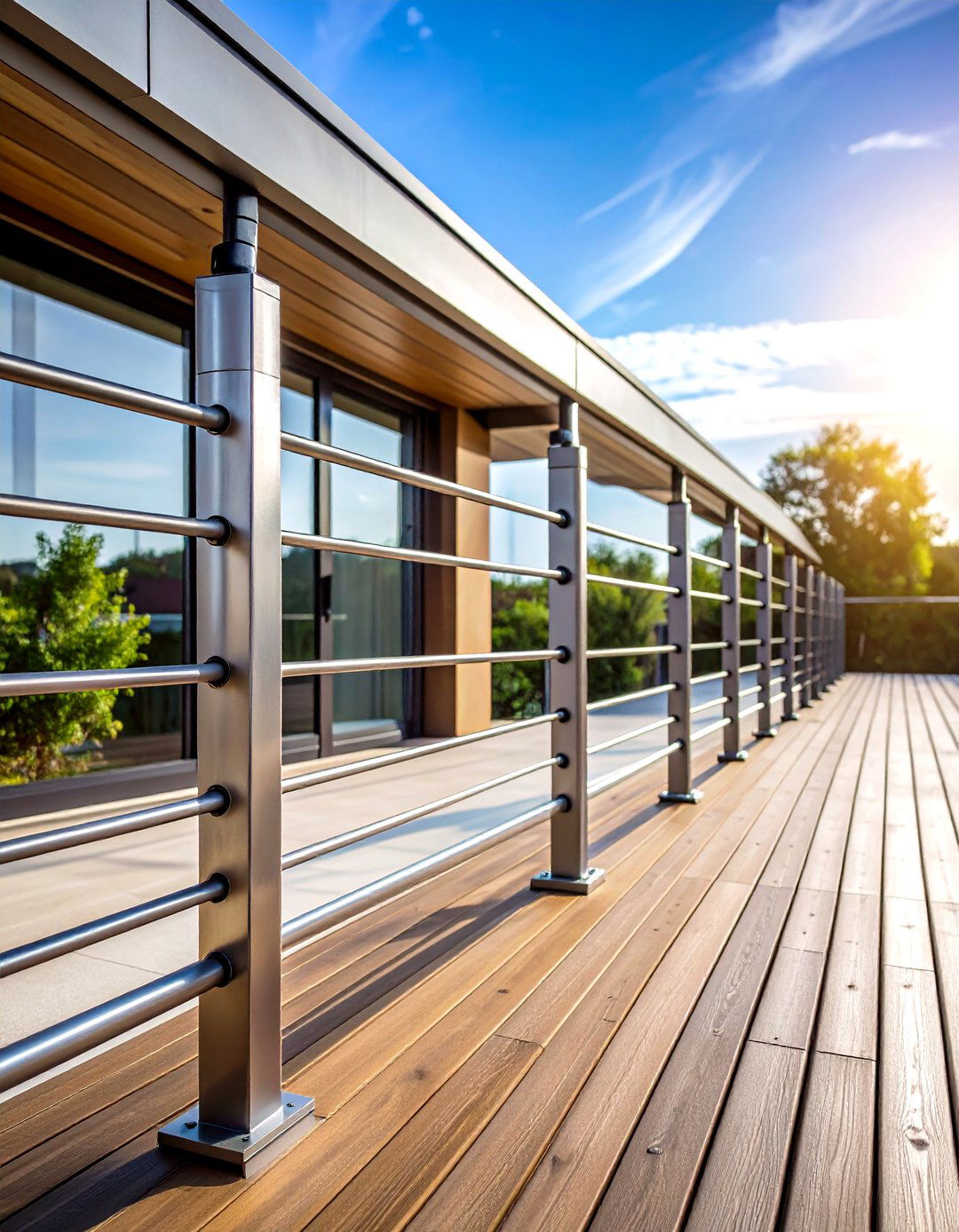
Industrial-style horizontal steel pipe deck railings bring urban sophistication to residential outdoor spaces through their robust, minimalist design aesthetic. The metal pipes run horizontally between posts, creating strong geometric lines that emphasize the deck's architectural framework. These systems often feature galvanized or powder-coated finishes that resist rust and corrosion while maintaining their distinctive metallic appearance. The pipe diameter typically ranges from one to two inches, providing substantial visual weight while maintaining an open feel. Installation requires welding or specialized connectors, ensuring secure joints that withstand significant loads and weather exposure. The industrial aesthetic pairs exceptionally well with modern homes, loft-style apartments, and urban environments where raw materials create desired design statements.
7. Horizontal Mixed Material Deck Railing with Wood and Metal
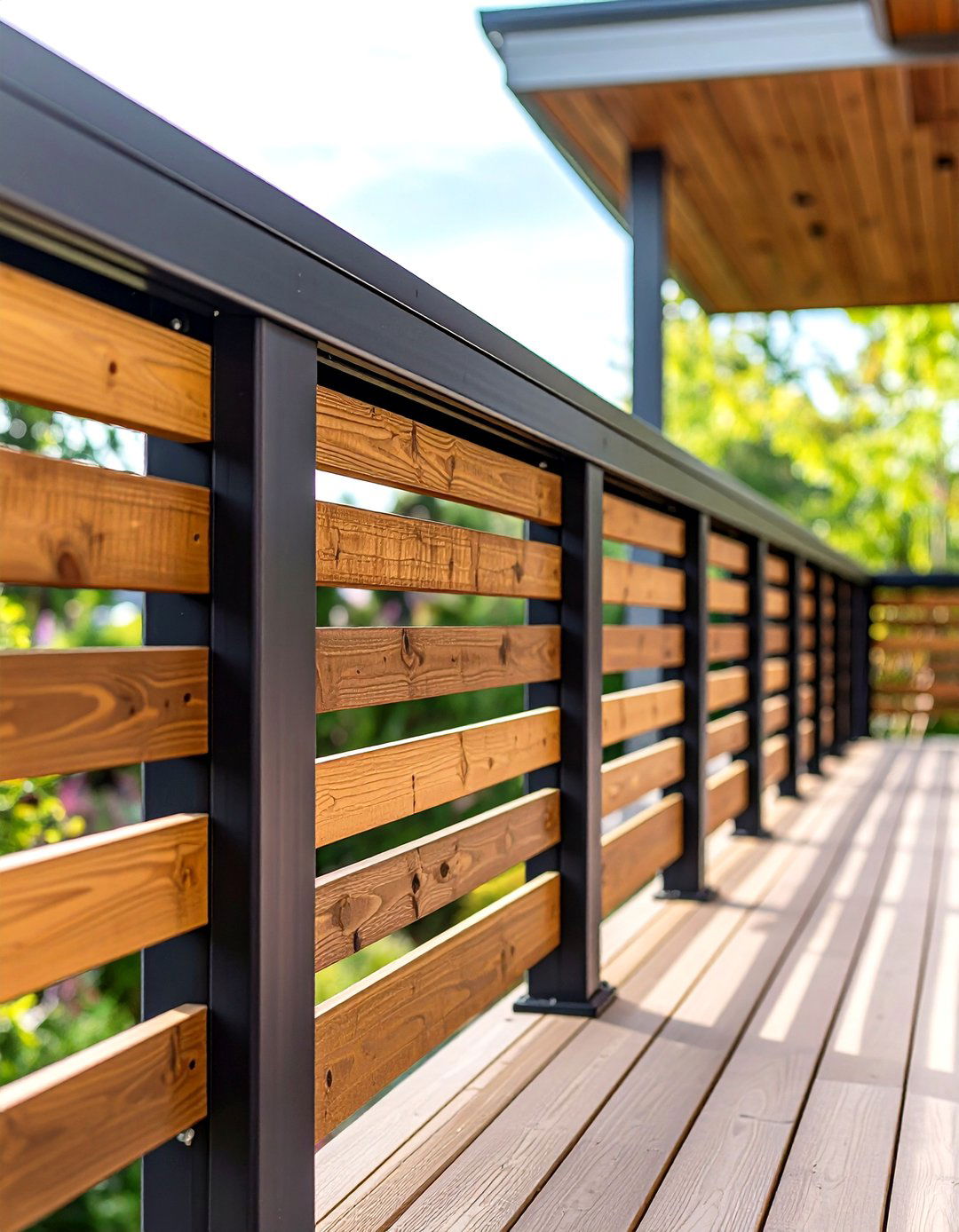
Combining warm wood with sleek metal creates horizontal deck railings that balance natural beauty with contemporary sophistication for versatile design appeal. The typical configuration features horizontal wood slats or metal bars supported by contrasting posts, creating visual interest through material juxtaposition. This approach allows homeowners to incorporate multiple design elements while maintaining cohesive horizontal lines throughout the railing system. Popular combinations include cedar slats with black metal posts or aluminum bars with natural wood frames. The mixed materials provide opportunities for customization, allowing coordination with existing architectural elements or deck materials. Maintenance requirements vary by material combination, with periodic care ensuring both components maintain their appearance and structural integrity over time.
8. Horizontal Privacy Screen Deck Railing with Closely Spaced Slats
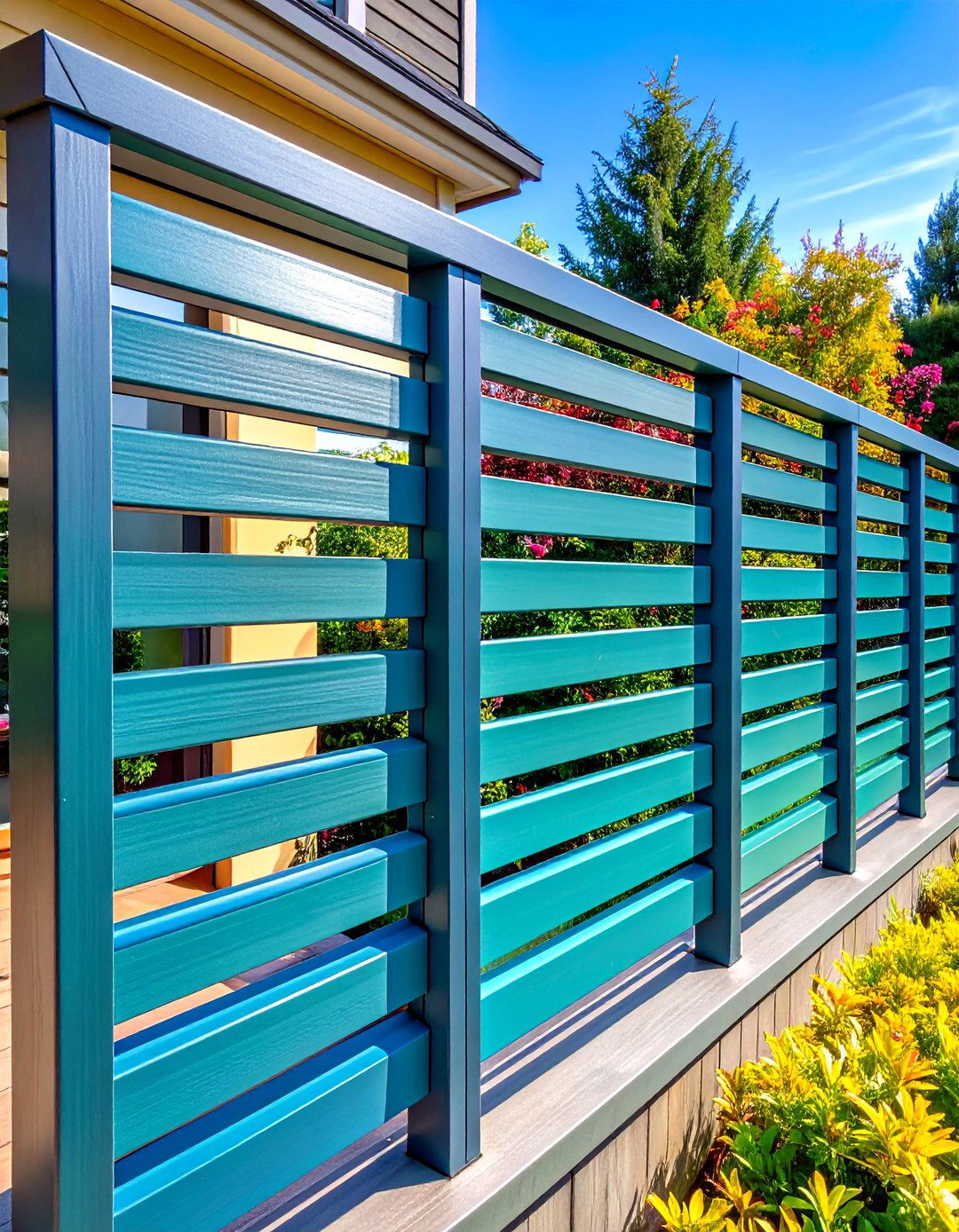
Horizontal privacy screen deck railings feature closely spaced slats that create secluded outdoor retreats while maintaining airflow and partial views. The minimal gaps between horizontal boards provide screening from neighboring properties without creating completely enclosed feeling. These systems work particularly well for urban decks, pool areas, or properties with close neighbors requiring additional privacy. The horizontal orientation emphasizes the railing's linear dimensions while creating rhythmic shadow patterns throughout the day. Material options include cedar, pine, composite, or aluminum slats that can be customized for desired opacity levels. Installation involves precise spacing to ensure uniform appearance while meeting building code requirements for safety and structural integrity.
9. Horizontal Rope Deck Railing with Nautical-Inspired Design
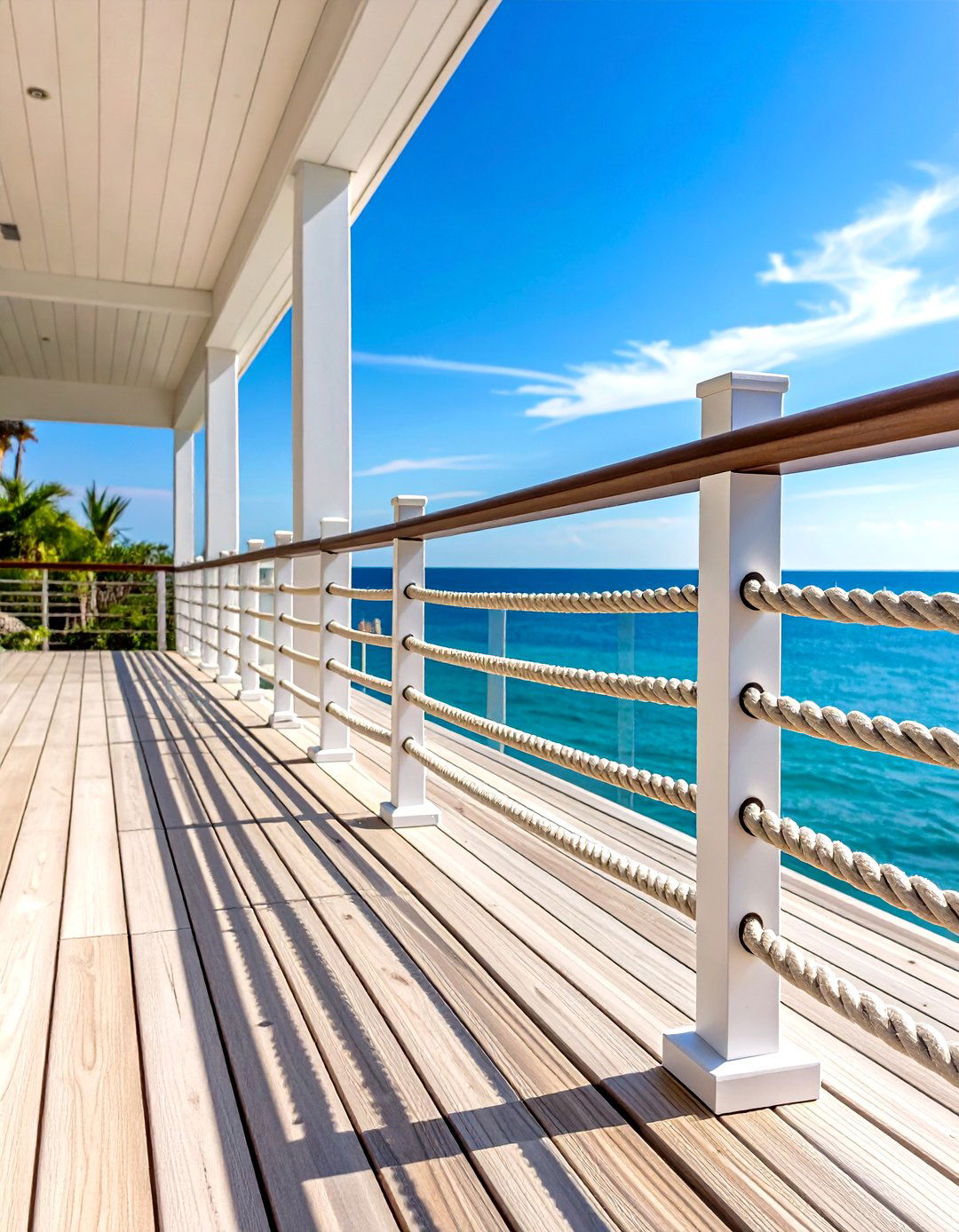
Marine-grade rope creates horizontal deck railings that bring coastal charm and relaxed elegance to waterfront properties and nautical-themed outdoor spaces. The rope runs horizontally between posts, typically in three to four parallel lines that provide safety while maintaining the system's casual aesthetic. High-quality synthetic ropes resist UV degradation, moisture, and salt air while maintaining their appearance and strength over time. The installation process involves tensioning systems that keep ropes taut while allowing for minor adjustments as materials settle. This design works exceptionally well with weathered wood posts and coastal-style architecture. Regular inspection ensures rope integrity, with replacements easily accomplished when necessary to maintain both safety and aesthetic appeal.
10. Horizontal Metal Mesh Deck Railing with Perforated Panels
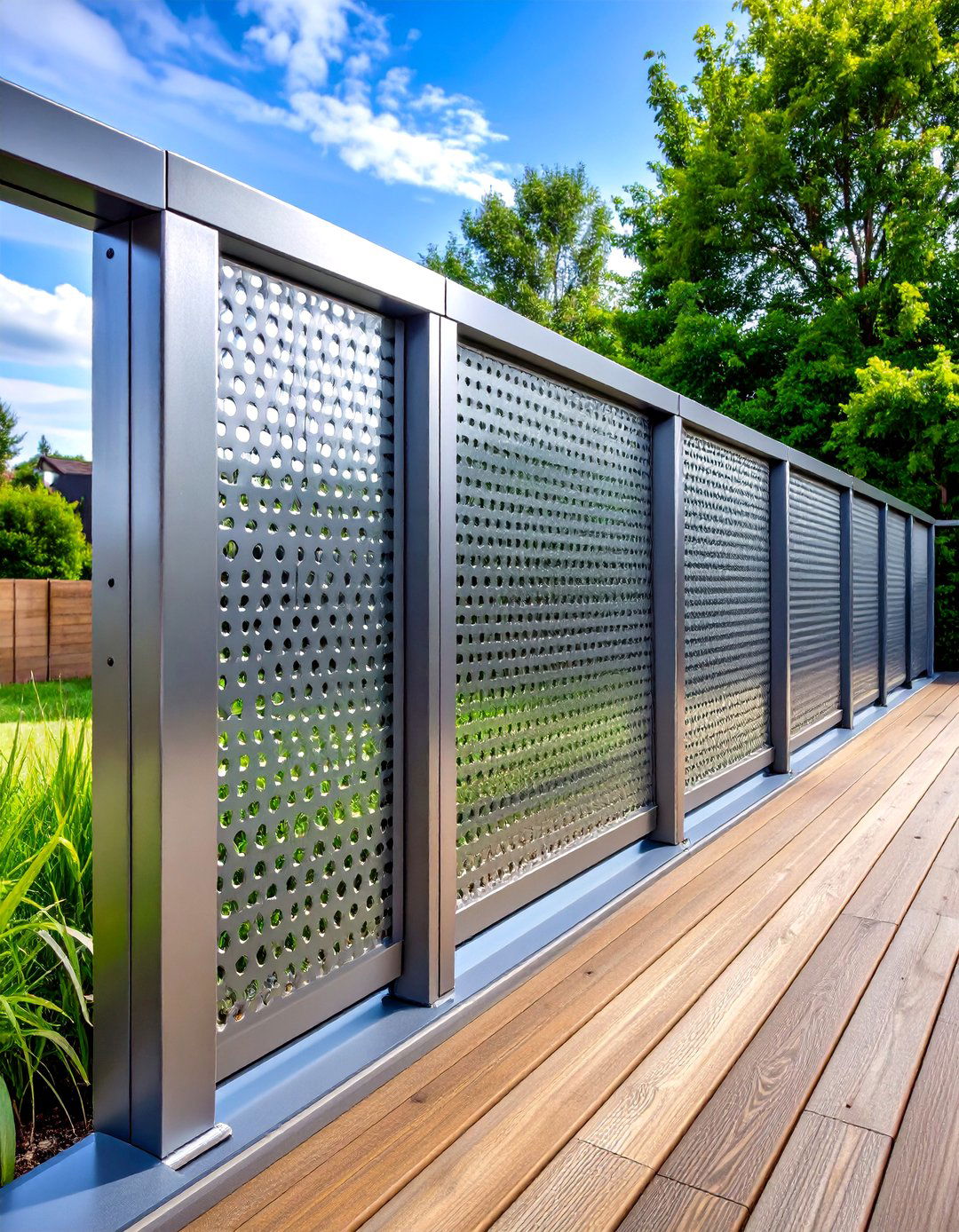
Perforated metal panels create horizontal deck railings that offer modern industrial aesthetics while providing partial privacy and wind protection for outdoor spaces. The precisely engineered holes in aluminum or steel panels create patterns that filter views while maintaining airflow. These systems provide more coverage than traditional open railings while avoiding the closed-in feeling of solid panels. The perforations can vary in size and pattern, allowing customization for different aesthetic preferences and functional requirements. Powder-coated finishes resist corrosion while offering numerous color options to coordinate with architectural elements. Installation involves mounting panels within frames, creating clean lines that emphasize the horizontal orientation while providing substantial visual impact.
11. Horizontal Bamboo Deck Railing with Sustainable Natural Materials
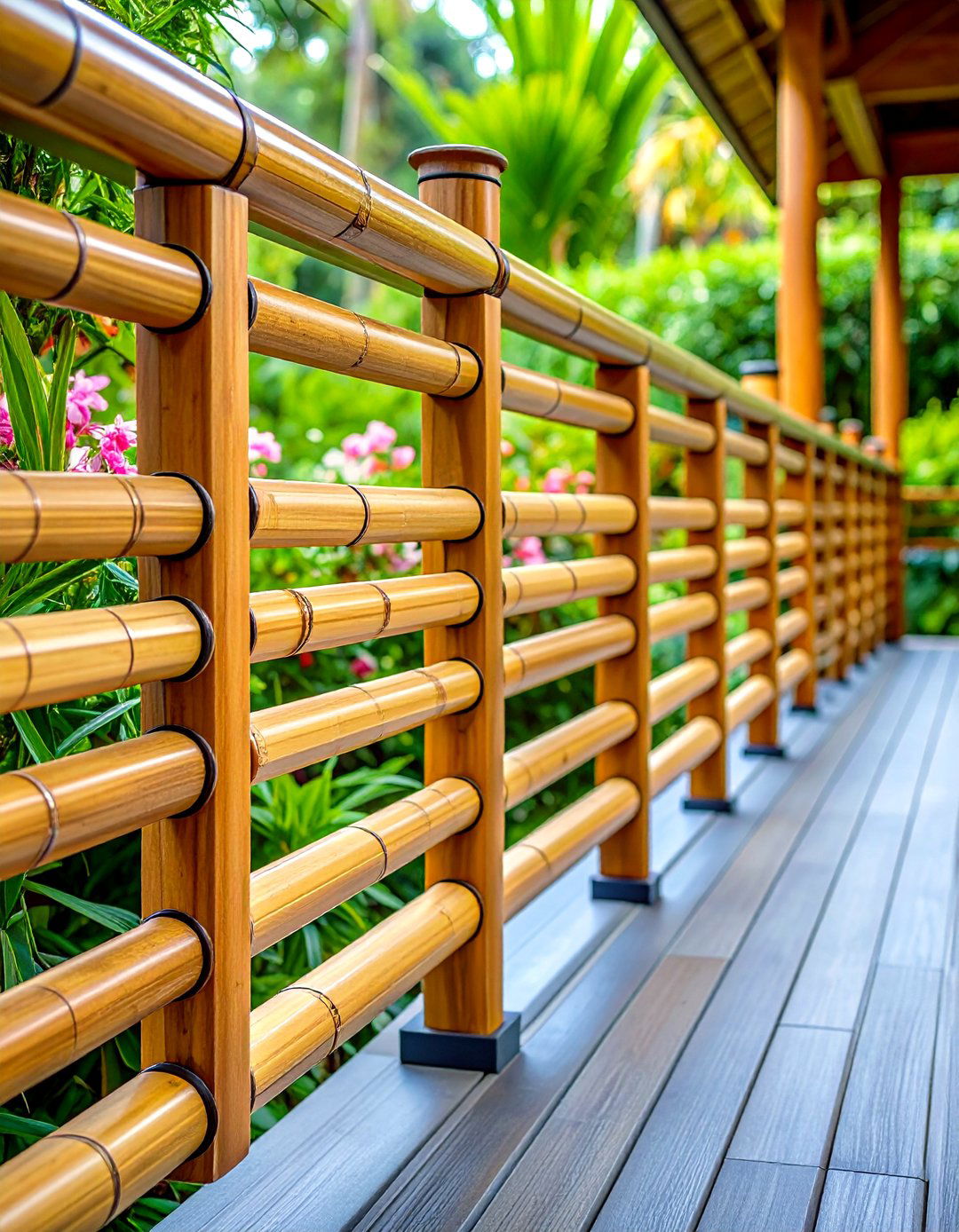
Bamboo's rapid growth and strength make horizontal bamboo deck railings an environmentally conscious choice that offers exotic beauty and sustainable credentials. The natural golden tones and subtle grain patterns create warm, inviting railings that complement tropical and contemporary design themes. Bamboo's flexibility allows for curved installations while maintaining structural integrity required for safety applications. The material's natural resistance to moisture and insects reduces maintenance requirements compared to traditional hardwoods. Horizontal installation emphasizes bamboo's linear characteristics while creating clean geometric lines. Regular application of protective sealers maintains color and extends lifespan, while the material's renewable nature supports environmentally responsible building practices that appeal to eco-conscious homeowners.
12. Horizontal Vinyl Deck Railing with Low-Maintenance Benefits
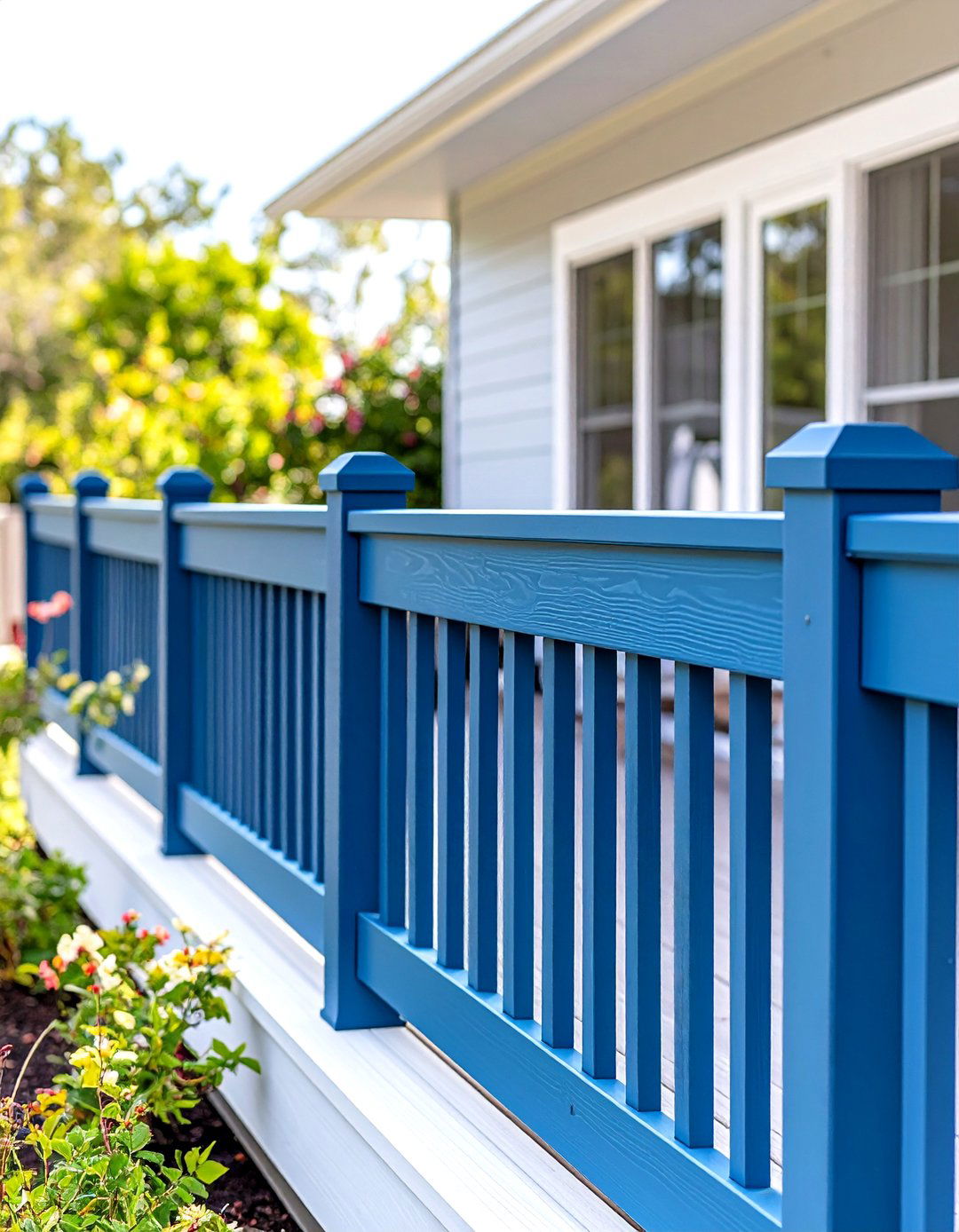
Vinyl materials create horizontal deck railings that offer wood's traditional appearance without ongoing maintenance requirements, making them ideal for busy homeowners. The horizontal slat design mimics wood grain textures while providing consistent color and dimensional stability throughout all weather conditions. Modern vinyl formulations resist cracking, warping, and fading while maintaining their appearance for decades with minimal care. The installation process involves snap-together components that eliminate the need for painting or staining. Available in various colors and textures, vinyl railings coordinate with different architectural styles and personal preferences. The material's hollow construction provides insulation properties while maintaining strength required for safety applications, creating practical solutions for contemporary outdoor living.
13. Horizontal Corrugated Metal Deck Railing with Textured Industrial Style
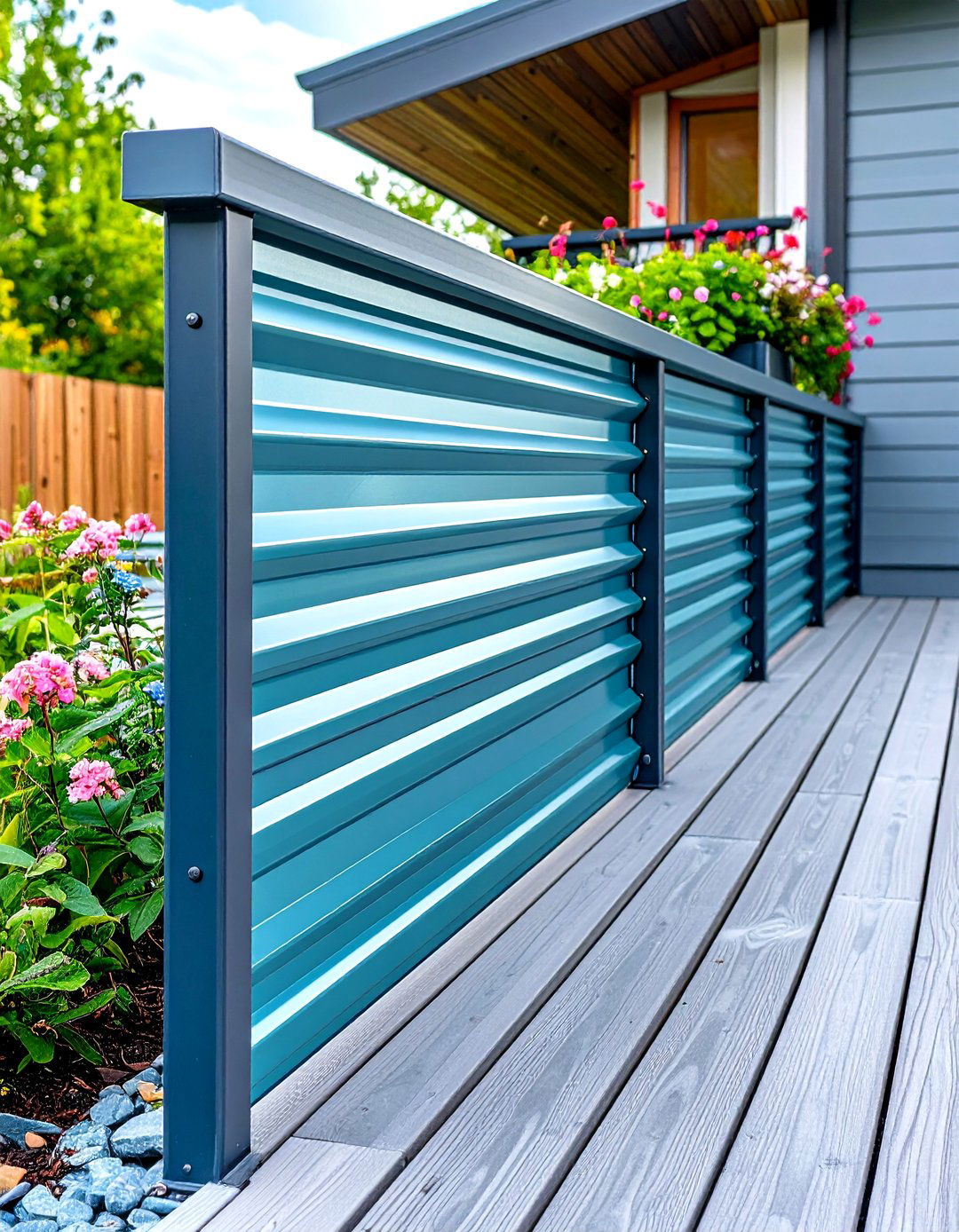
Corrugated metal panels create horizontal deck railings that emphasize industrial design aesthetics through their distinctive wave patterns and metallic finishes. The horizontal ridges catch light differently throughout the day, creating dynamic visual effects that enhance outdoor spaces. These panels typically mount within frames, creating clean horizontal lines while showcasing the material's textural qualities. Galvanized or painted finishes resist corrosion while offering various color options to complement different design schemes. The corrugated profile provides structural strength while maintaining relatively light weight for easier installation. This design approach works particularly well with modern homes, converted industrial buildings, and contemporary outdoor spaces requiring distinctive architectural elements that make bold design statements.
14. Horizontal Frosted Glass Deck Railing with Privacy Enhancement
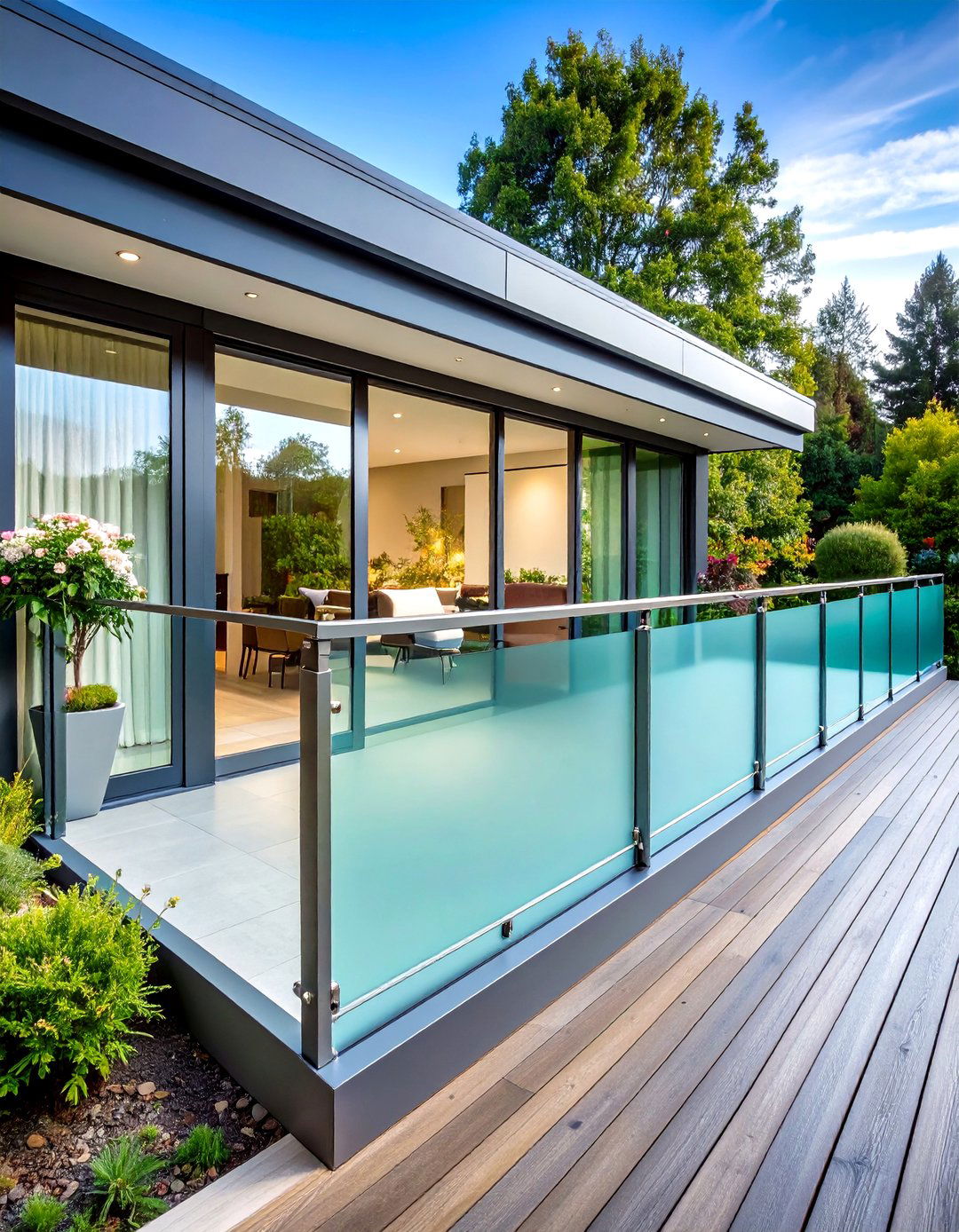
Frosted glass panels create horizontal deck railings that provide privacy while maintaining light transmission and sophisticated contemporary aesthetics for modern outdoor spaces. The etched or sandblasted surface obscures direct views while allowing natural light to filter through, creating soft, diffused illumination. These panels typically mount within aluminum or steel frames, creating clean horizontal lines that emphasize the railing's geometric precision. The frosted treatment can vary from subtle textures to bold patterns, allowing customization for different design preferences and privacy requirements. Tempered glass construction ensures safety while providing weather resistance and easy maintenance. Regular cleaning with glass cleaners maintains the frosted surface while preserving the panel's light-filtering properties and visual appeal.
15. Horizontal Wrought Iron Deck Railing with Decorative Scrollwork
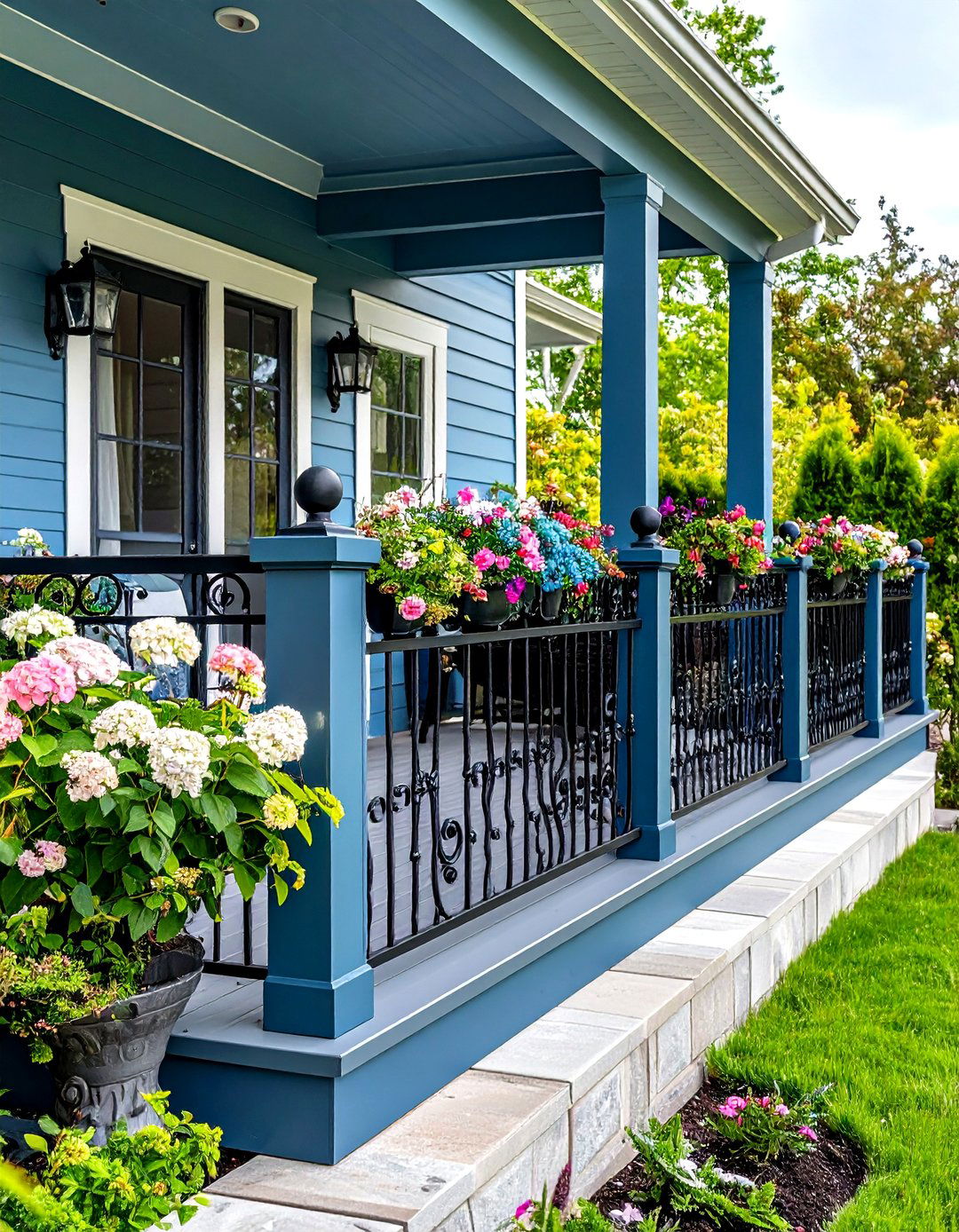
Traditional wrought iron creates horizontal deck railings that combine classical elegance with contemporary horizontal orientation for sophisticated outdoor design statements. The horizontal bars feature decorative elements like scrollwork or geometric patterns that add visual interest while maintaining safety functionality. Hand-forged details provide unique character that mass-produced materials cannot replicate, creating custom appearances for discerning homeowners. The iron's durability ensures decades of service while developing attractive patina over time. Powder-coating or paint finishes protect against rust while offering color customization options. Installation requires professional expertise due to the material's weight and specialized mounting requirements. Regular maintenance includes periodic touch-up painting to preserve both appearance and structural integrity of these distinctive railings.
16. Horizontal Trellis Deck Railing with Integrated Plant Support
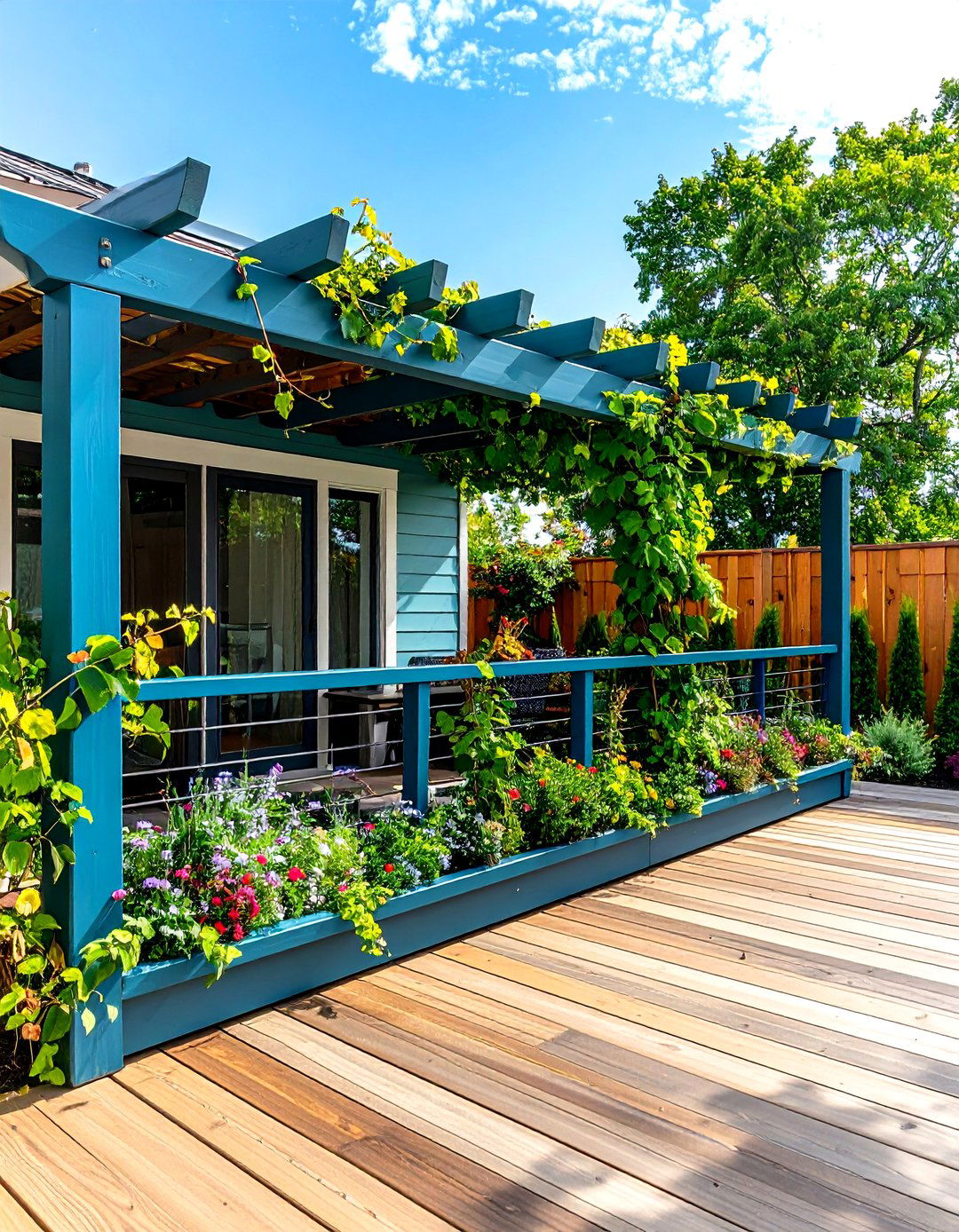
Trellis-style horizontal deck railings combine safety functionality with gardening opportunities, creating living architectural elements that evolve throughout growing seasons. The horizontal framework provides structure for climbing plants like ivy, clematis, or flowering vines that create natural privacy screens. Wood or metal construction supports both the railing's structural requirements and plant growth needs. The integration of vegetation softens hard architectural lines while providing seasonal color changes and natural air purification. Plant selection affects maintenance requirements, with some species requiring regular pruning while others grow with minimal intervention. This approach works particularly well for garden enthusiasts and properties where natural screening enhances outdoor living spaces while supporting local wildlife habitats.
17. Horizontal LED-Integrated Deck Railing with Modern Lighting
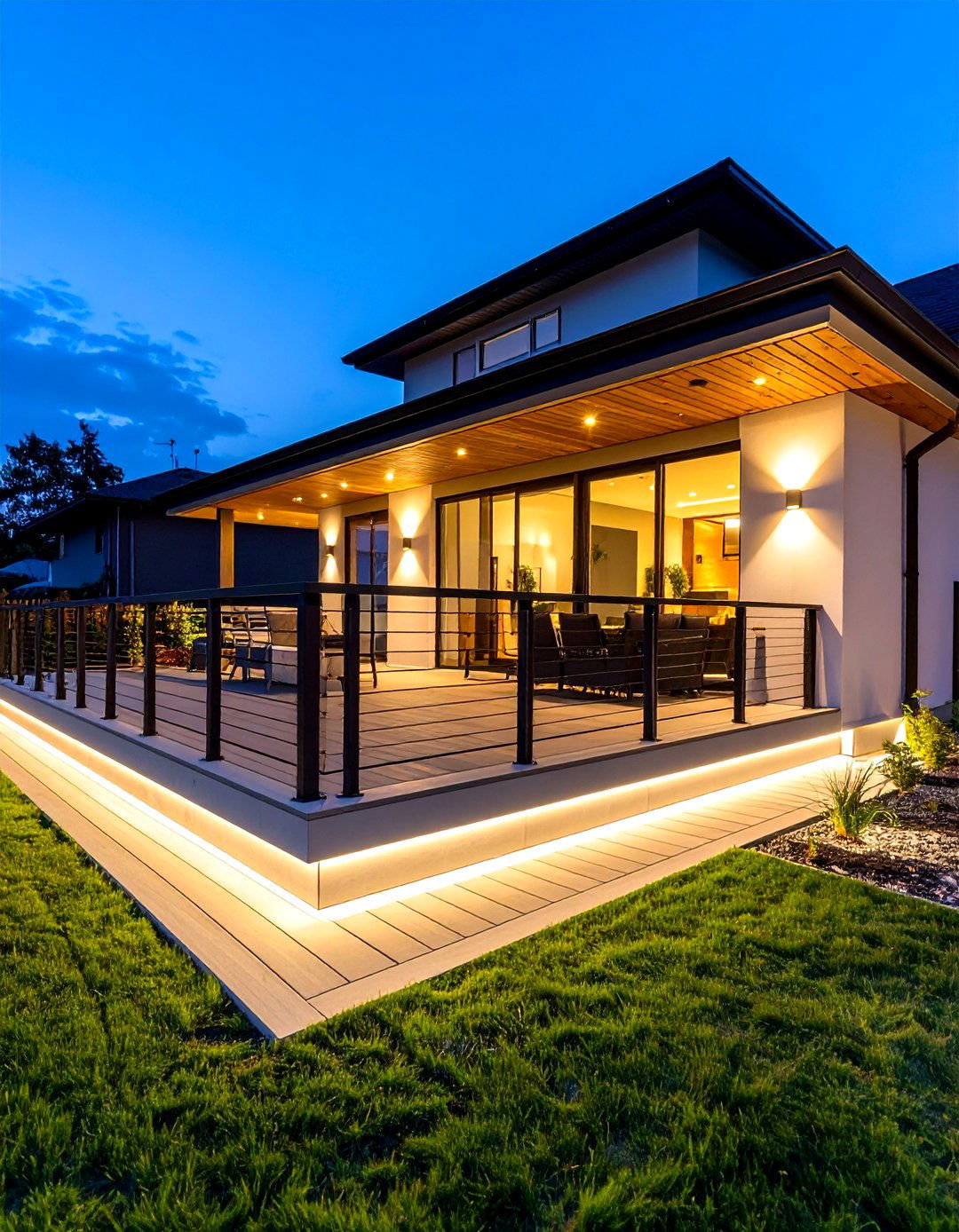
LED lighting integration creates horizontal deck railings that provide illumination for safety and ambiance while maintaining clean contemporary design aesthetics. The lighting elements typically mount beneath handrails or within horizontal slats, creating subtle glow effects that enhance evening outdoor activities. Energy-efficient LED technology provides long-lasting illumination with minimal power consumption and heat generation. The lighting can feature programmable colors, dimming capabilities, or motion sensors for enhanced functionality and convenience. Weather-resistant components ensure reliable operation throughout all seasons. Installation requires electrical connections, often involving professional electricians to ensure code compliance and safety. The combination of safety lighting with railing functionality creates sophisticated outdoor environments perfect for entertaining and extending outdoor living into evening hours.
18. Horizontal Lattice Deck Railing with Traditional Diamond Patterns
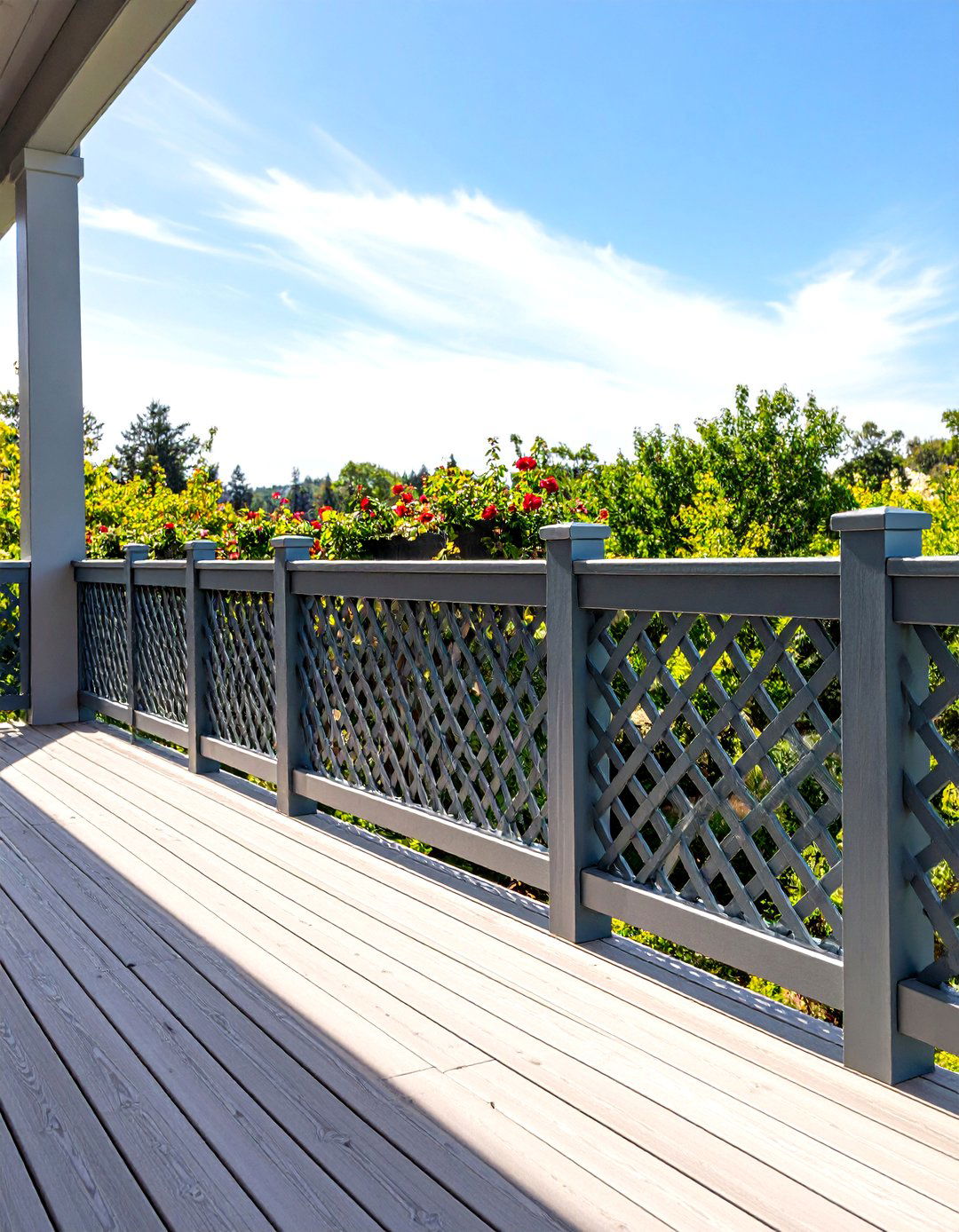
Lattice panels create horizontal deck railings that offer traditional charm while providing partial privacy and decorative appeal for classic outdoor design themes. The diamond or square patterns create visual interest while allowing airflow and filtered views through the railing system. These panels typically mount within frames, creating horizontal emphasis while showcasing the lattice's geometric patterns. Wood or vinyl construction offers different maintenance requirements and aesthetic characteristics to suit various preferences and budgets. The lattice design provides moderate privacy screening while maintaining an open, airy feeling. Installation involves standard mounting techniques with pre-fabricated panels that ensure consistent spacing and professional appearance. Regular maintenance varies by material, with periodic cleaning and protective treatments extending the railing's lifespan and preserving its decorative appeal.
19. Horizontal Stone Veneer Deck Railing with Natural Texture
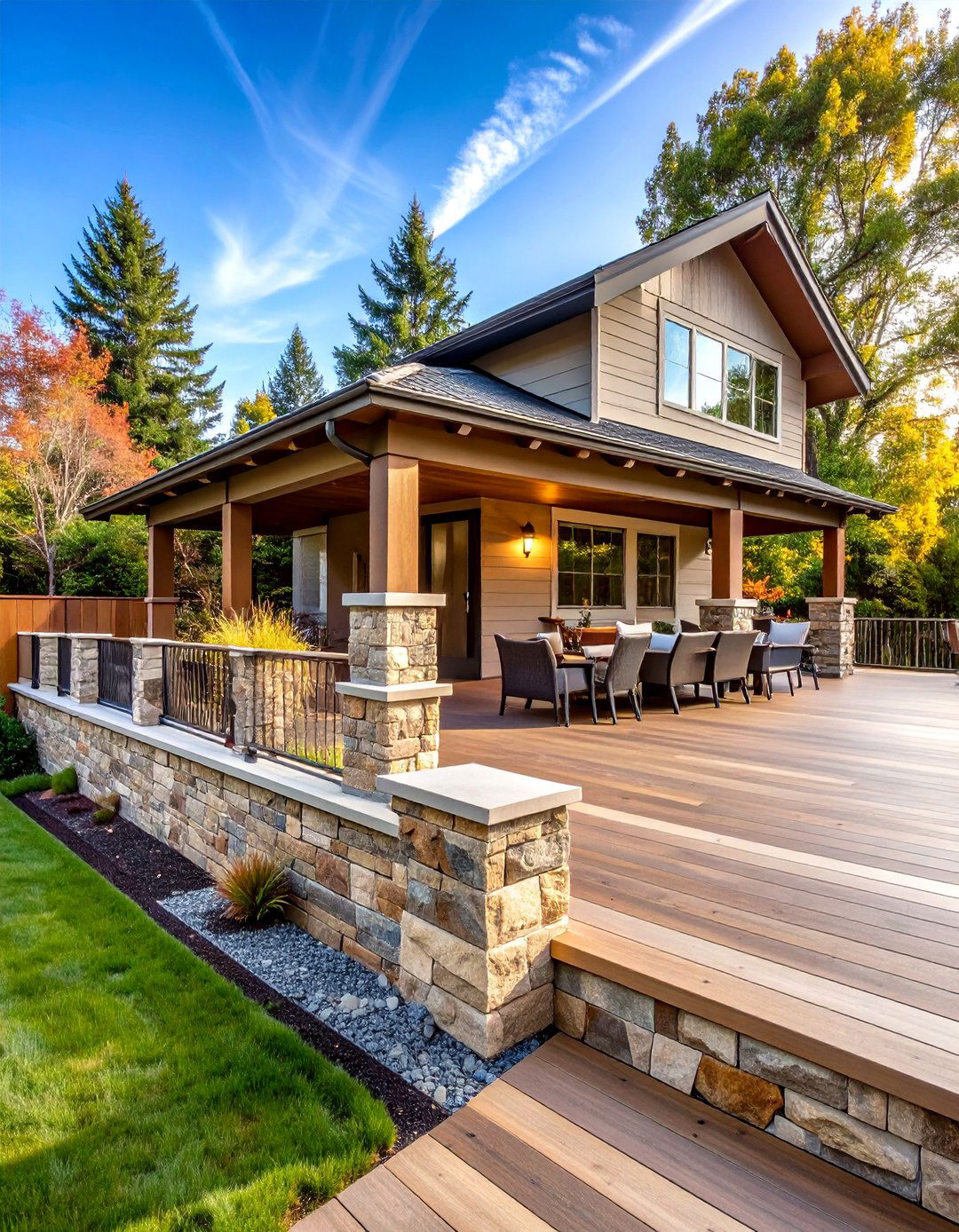
Natural stone veneer creates horizontal deck railings that provide substantial visual weight and earthy textures for distinctive outdoor design statements. The horizontal application of stone materials creates strong linear elements that emphasize the railing's architectural presence. These systems typically involve mounting stone panels within structural frames that provide necessary strength and support. The natural variations in color and texture create unique appearances that cannot be replicated with manufactured materials. Installation requires careful attention to weight distribution and proper mounting techniques to ensure structural integrity. Weather resistance and durability make stone railings particularly suitable for harsh climates and high-exposure locations. Maintenance involves periodic cleaning and potential resealing to preserve appearance and protect against weathering while maintaining the stone's natural beauty.
20. Horizontal Mixed-Height Deck Railing with Varying Slat Dimensions

Varying slat heights create horizontal deck railings that add visual rhythm and contemporary design interest while maintaining essential safety functionality. This approach involves alternating different width horizontal boards or metal bars, creating dynamic patterns that break up monotonous lines. The variation can be subtle with minor dimension changes or dramatic with significant size differences between elements. This design technique works with various materials including wood, metal, or composite components that coordinate with existing architectural elements. Careful planning ensures proper spacing and alignment while meeting building code requirements for safety and structural integrity. The varying dimensions create shadow patterns and visual texture that enhance the railing's architectural impact while providing opportunities for creative expression within functional constraints.
Conclusion:
Horizontal deck railings represent the perfect fusion of safety, style, and contemporary design sensibilities for modern outdoor living spaces. These versatile systems offer numerous material options, from sleek cables and glass panels to warm woods and durable metals, ensuring compatibility with any architectural style or personal preference. The horizontal orientation creates visual flow that enhances spatial perception while maintaining essential safety standards. Whether seeking minimalist aesthetics or decorative complexity, these twenty design concepts provide inspiration for transforming ordinary decks into extraordinary outdoor environments that extend living space beyond interior walls.



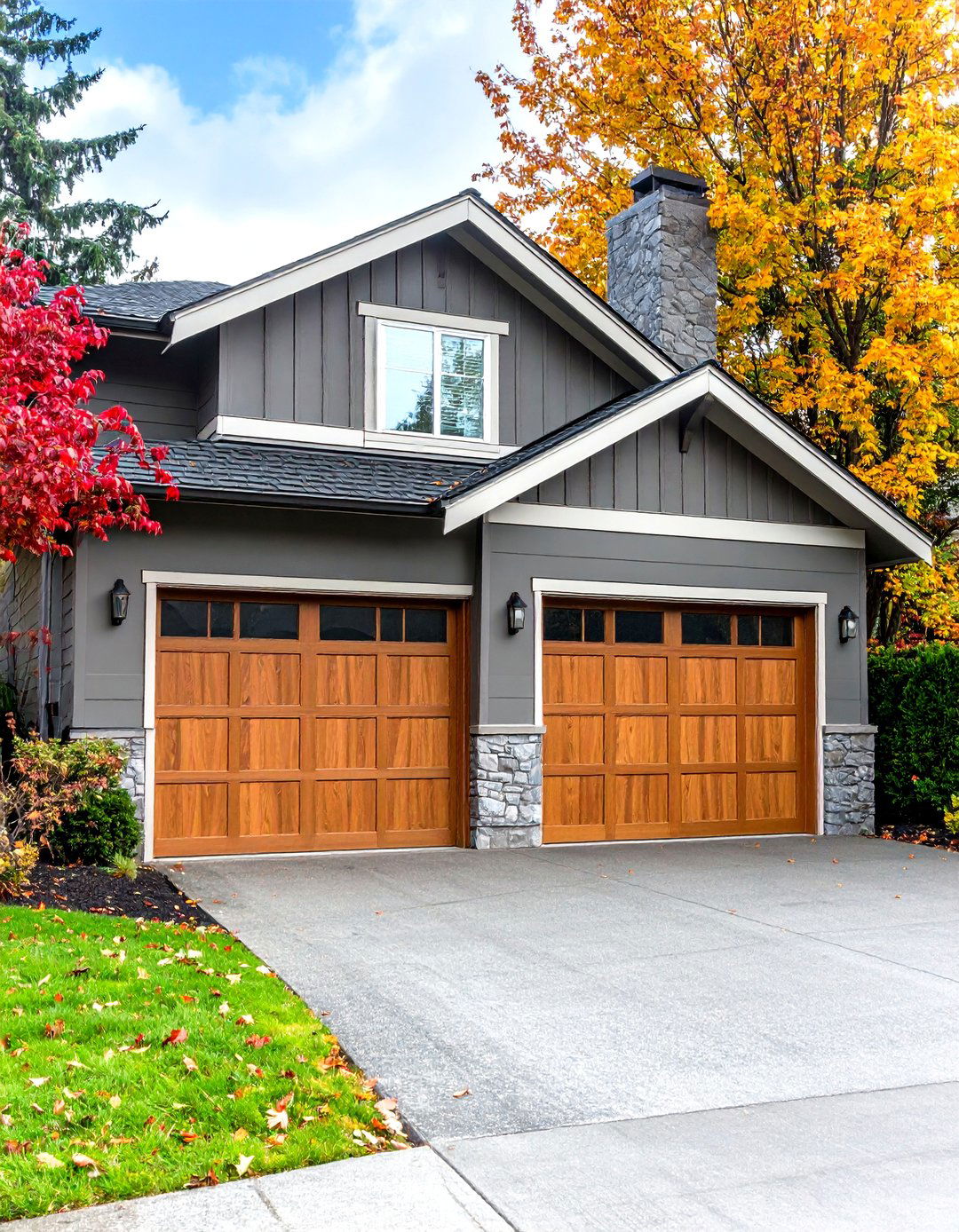
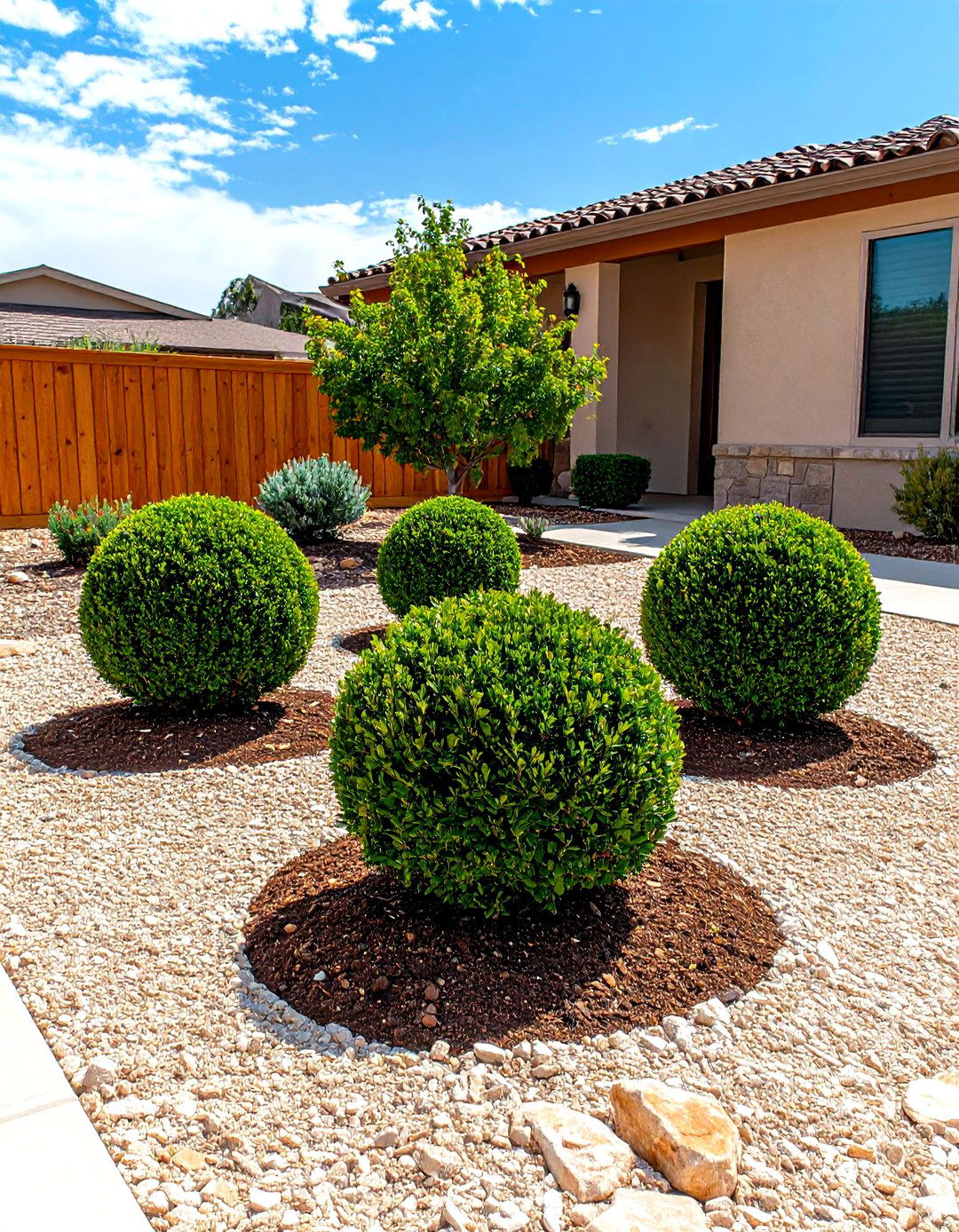
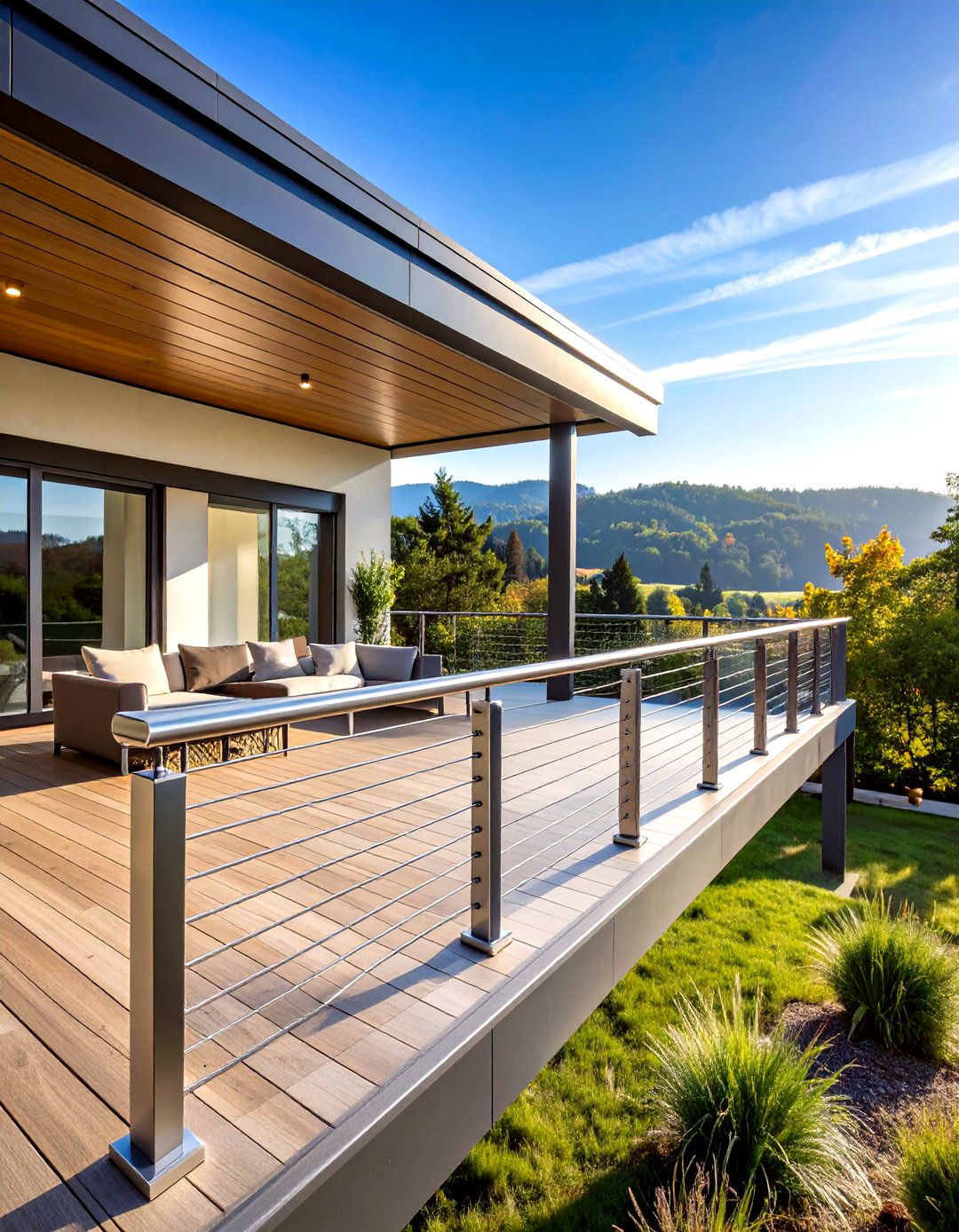
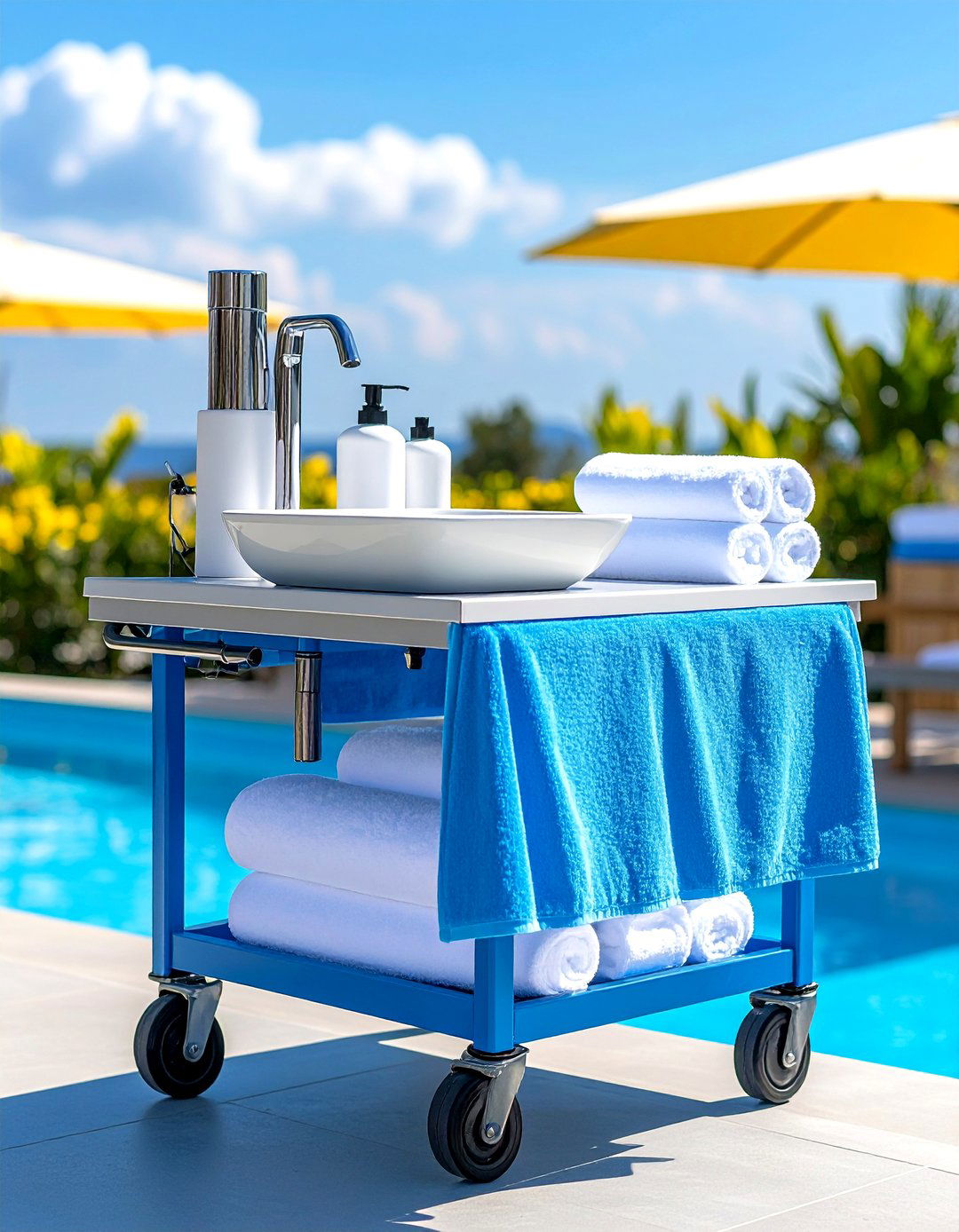
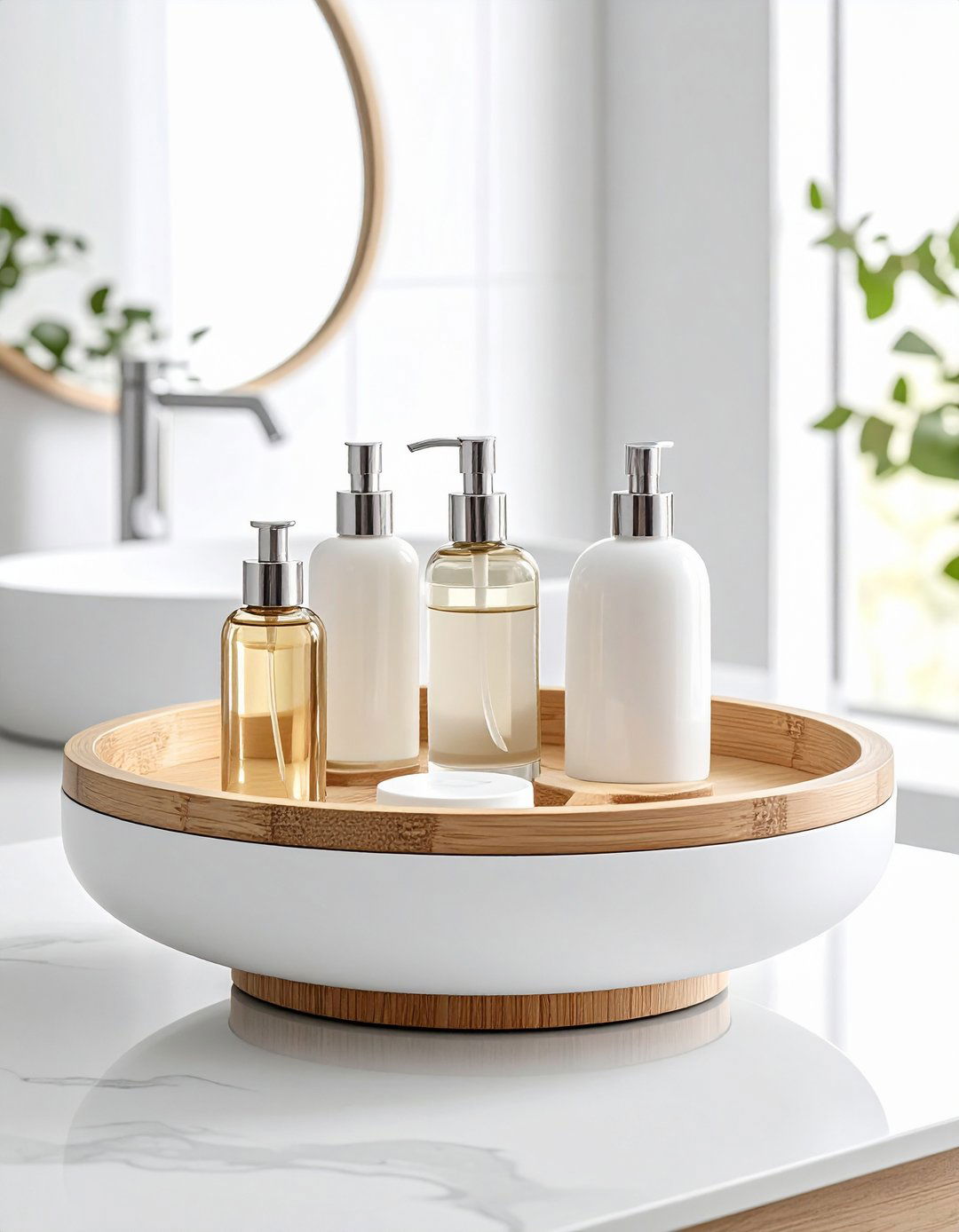
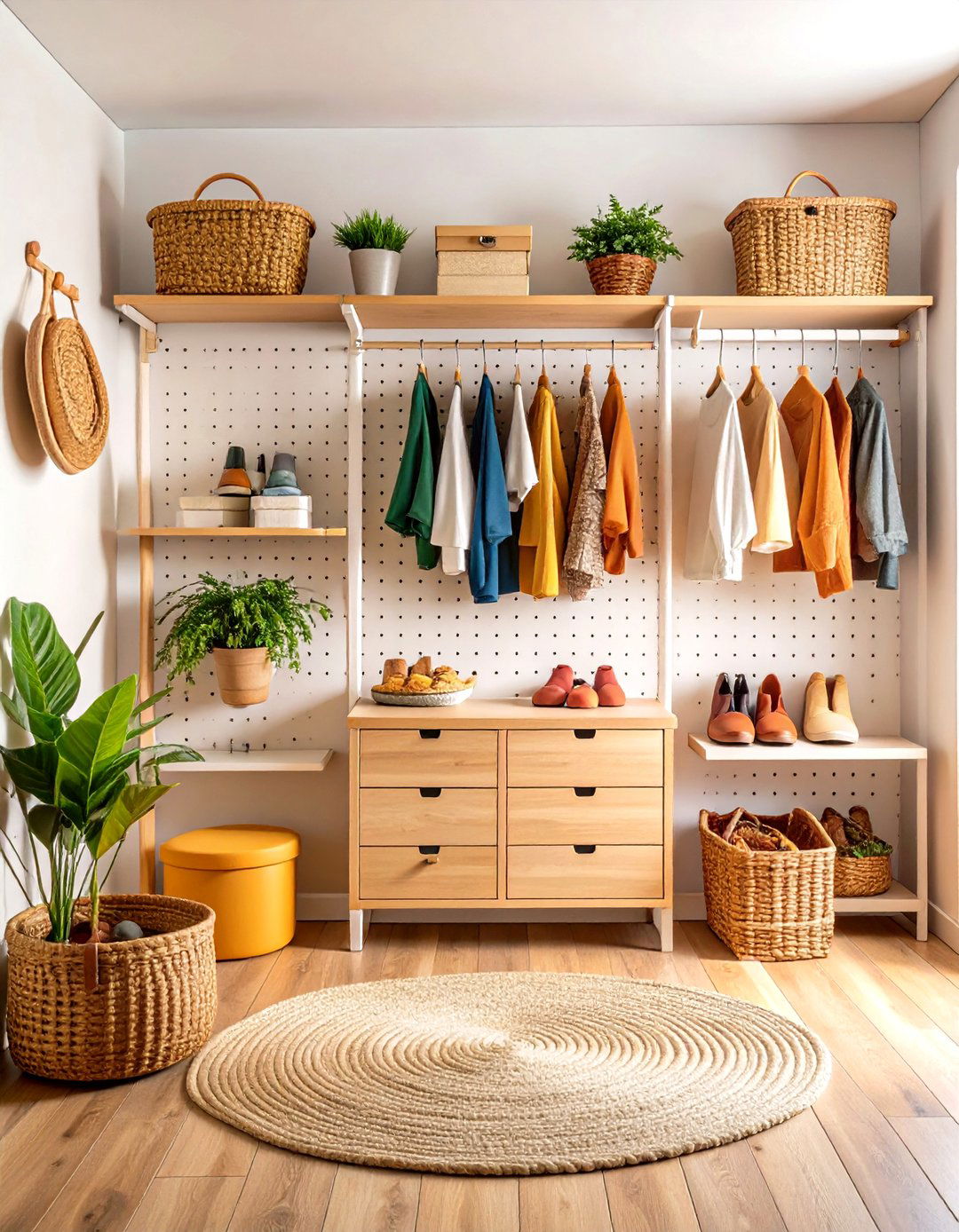
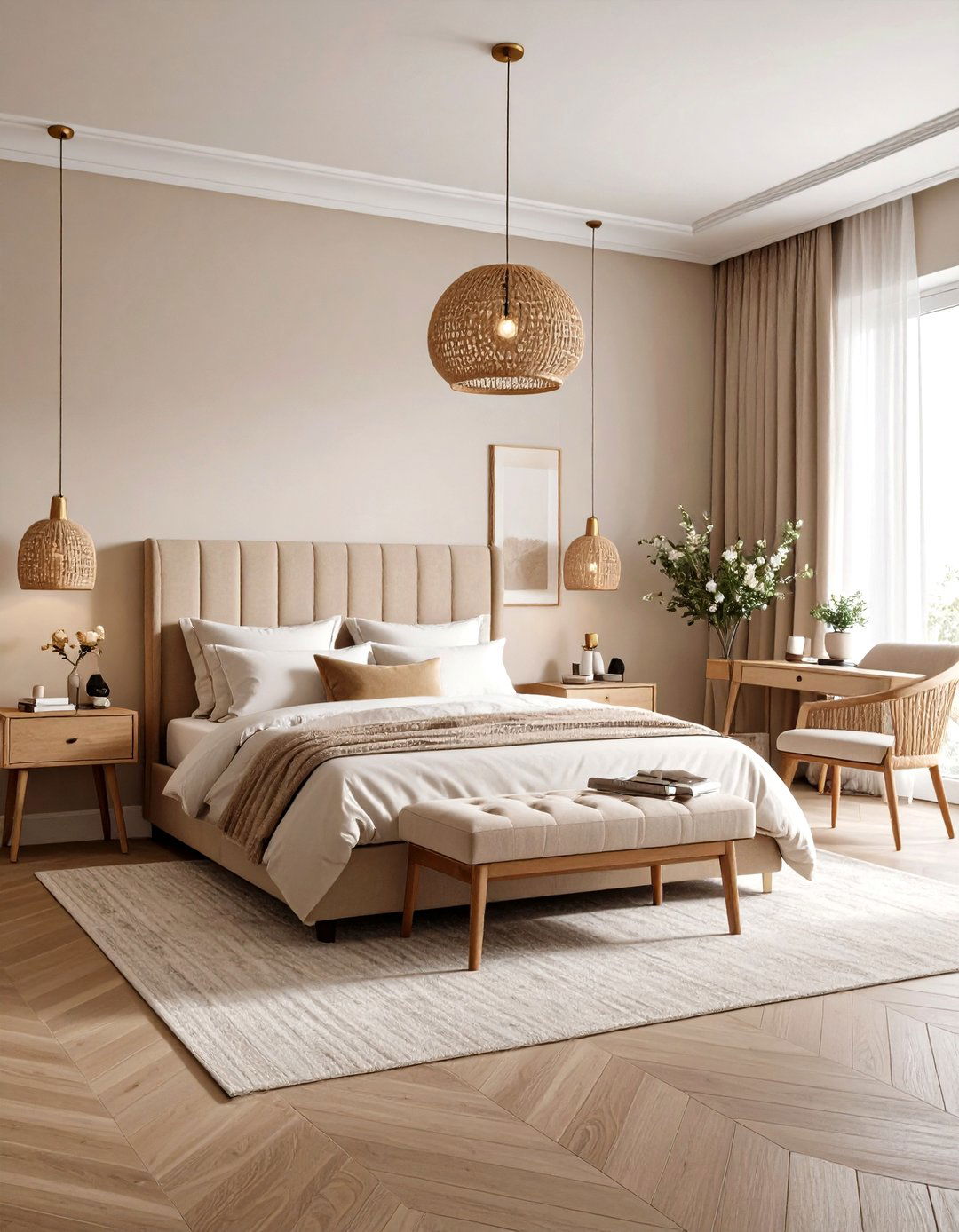

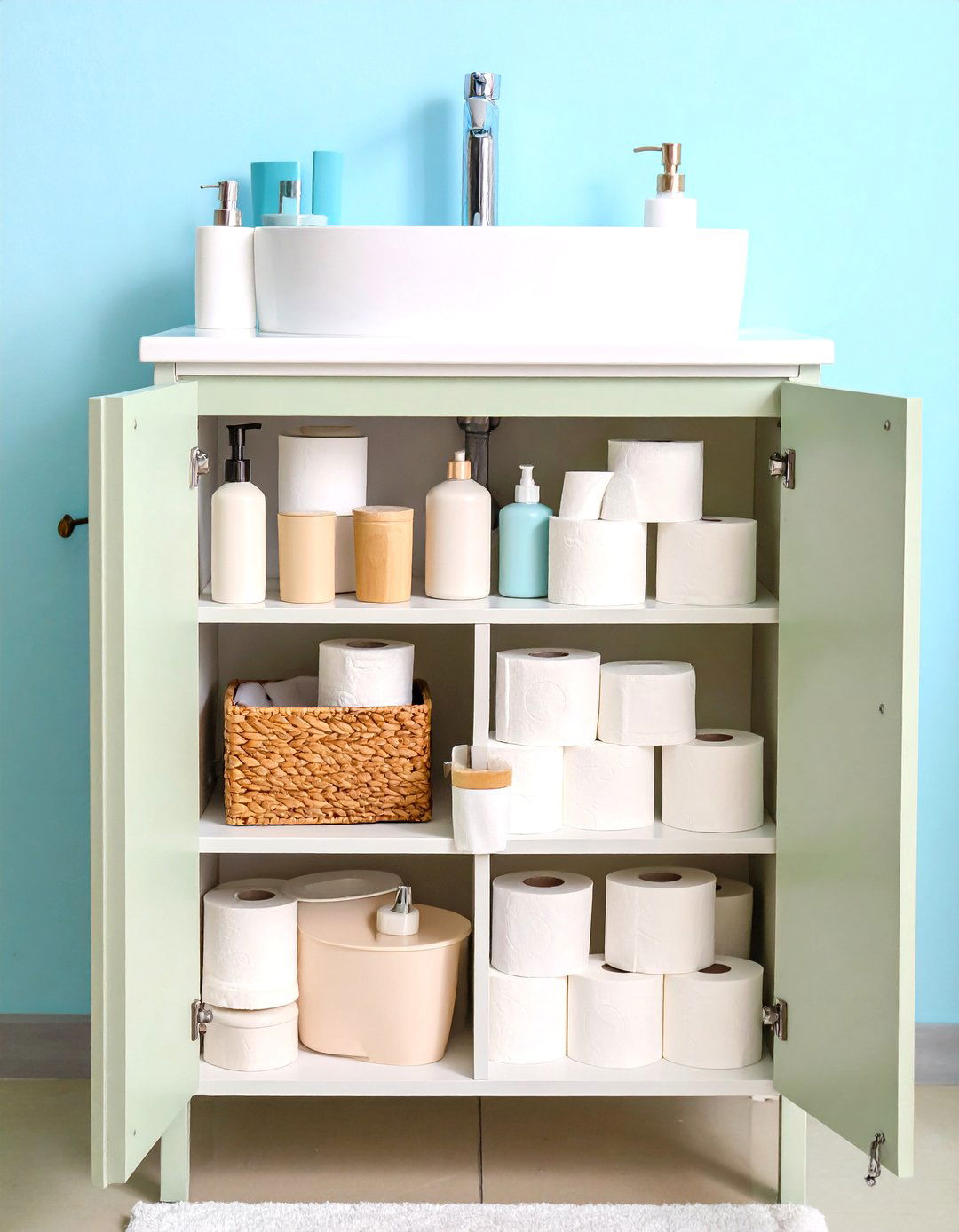
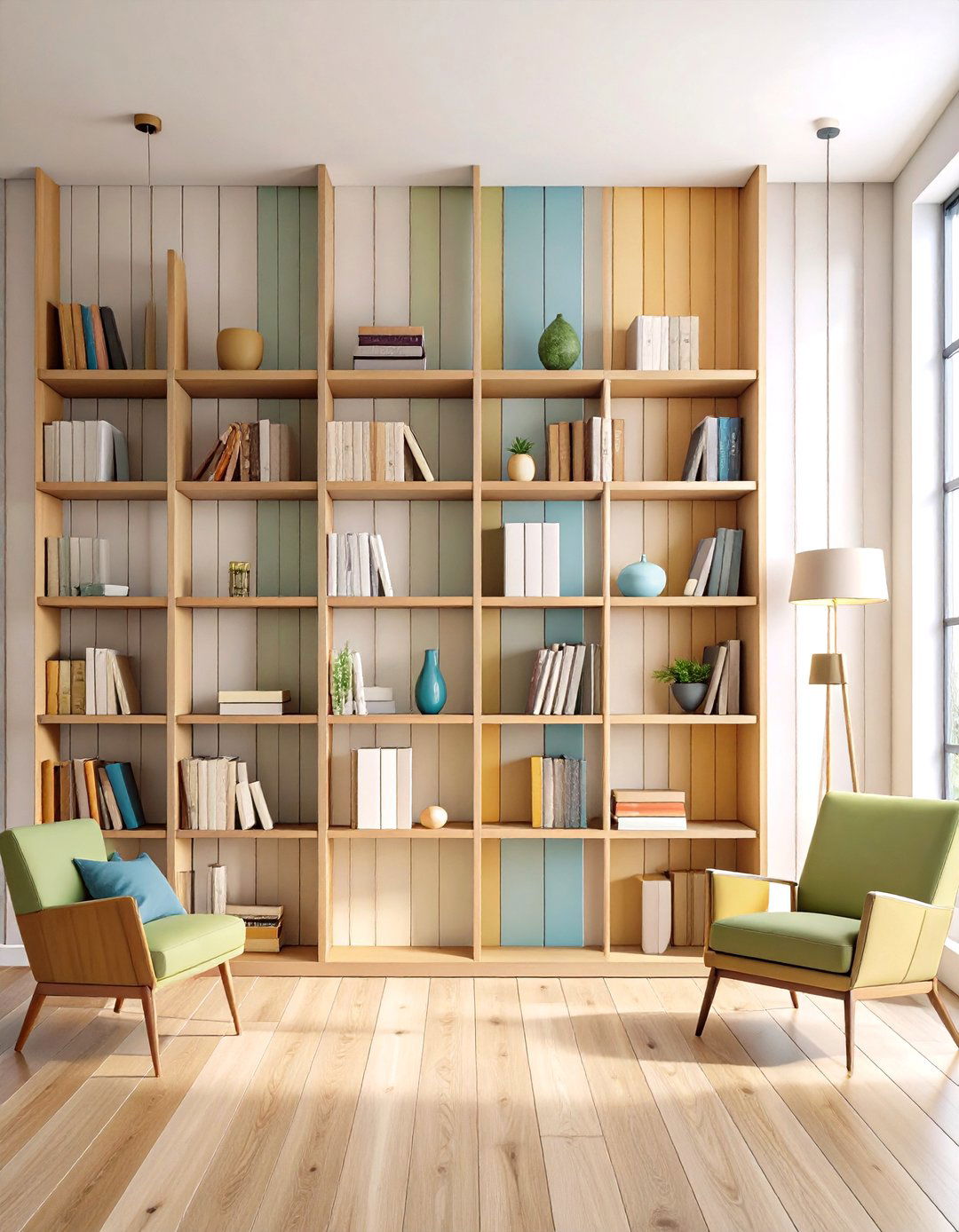
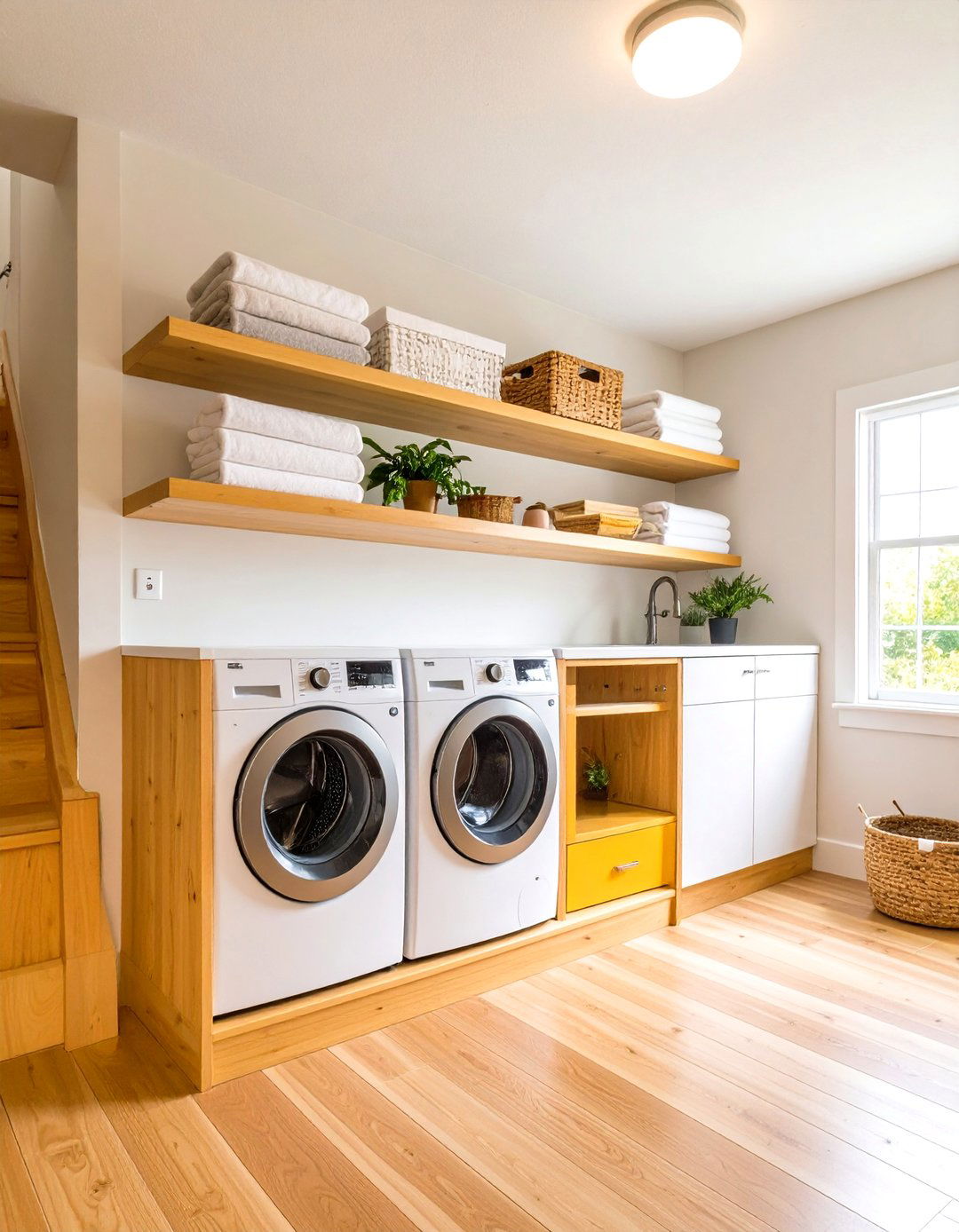
Leave a Reply